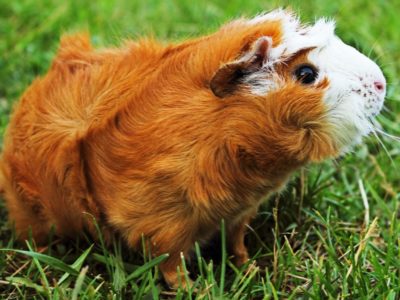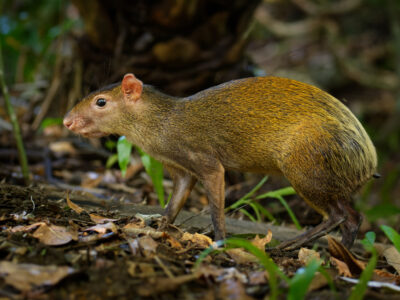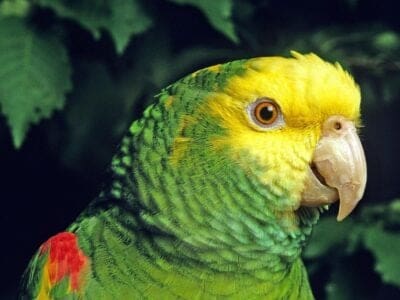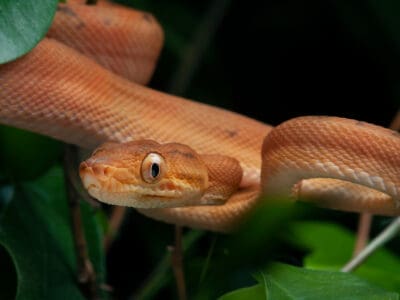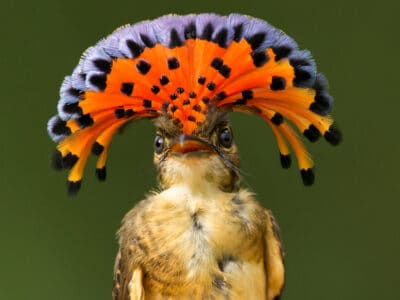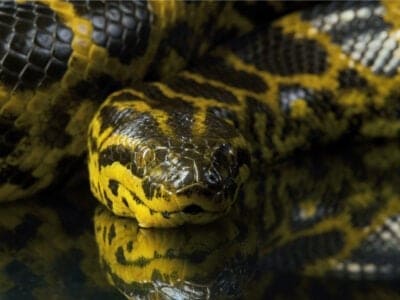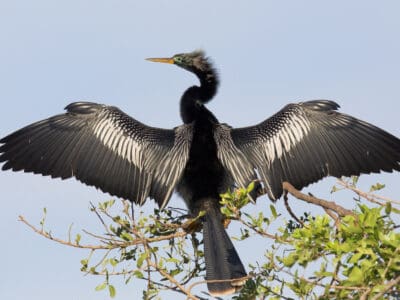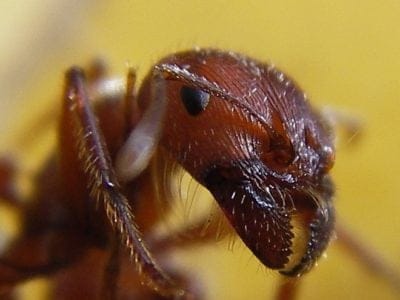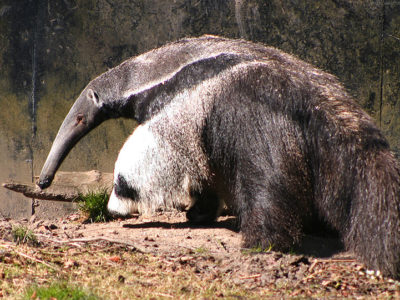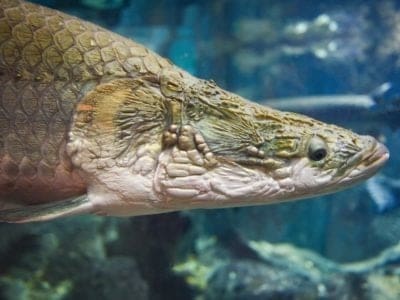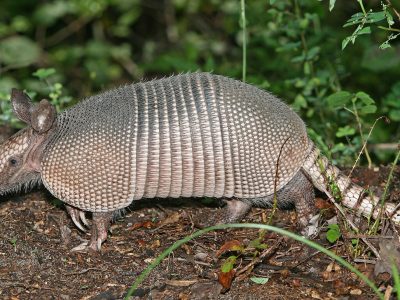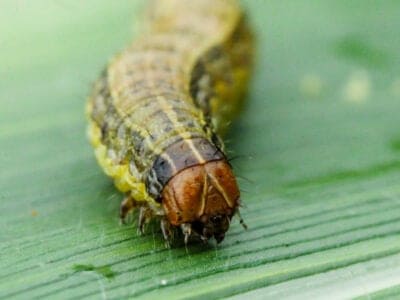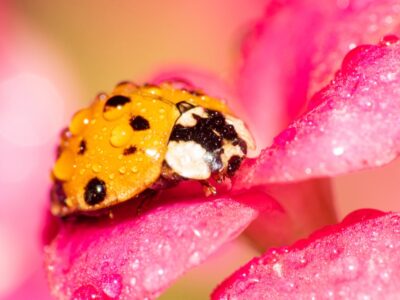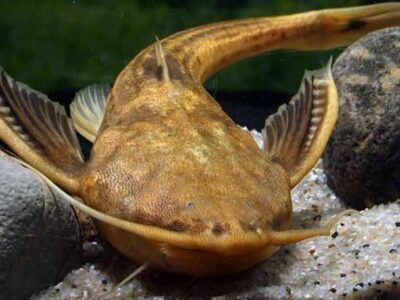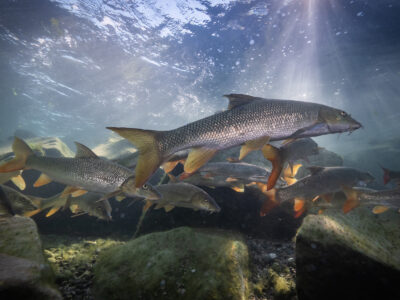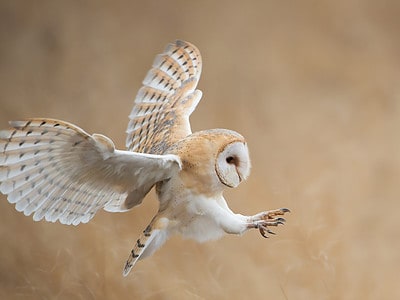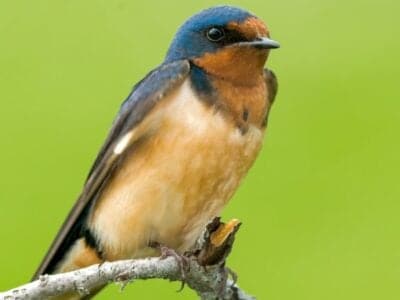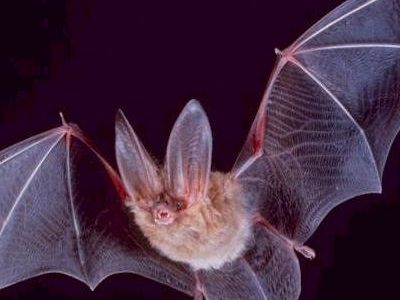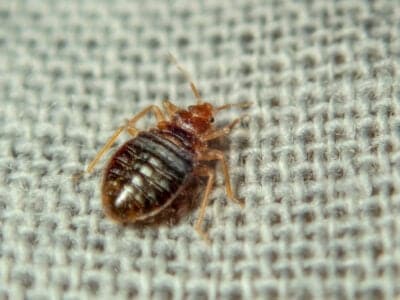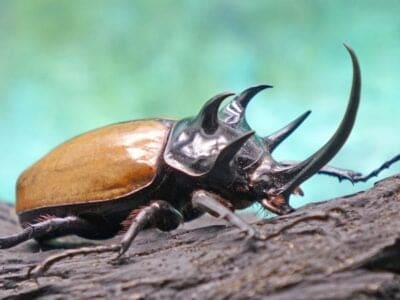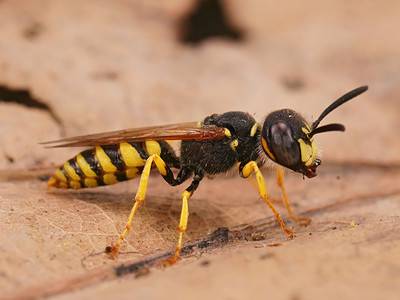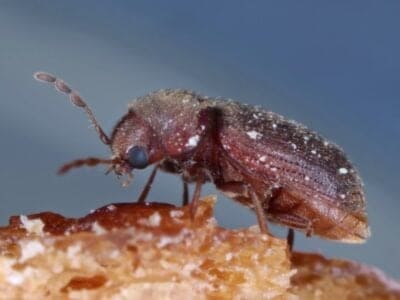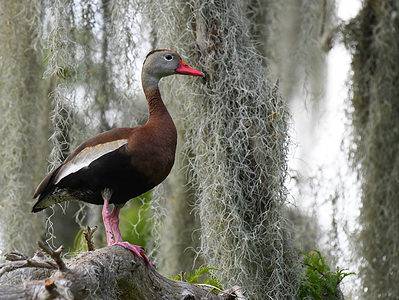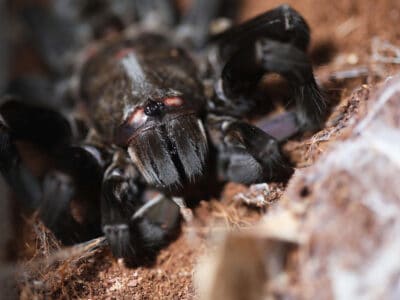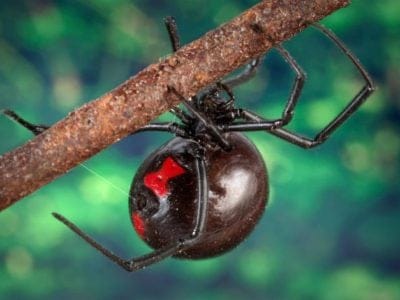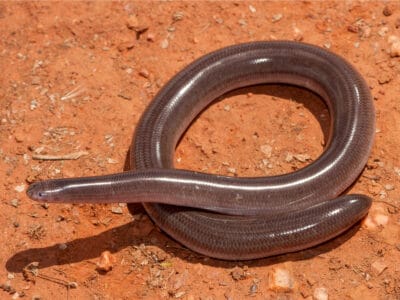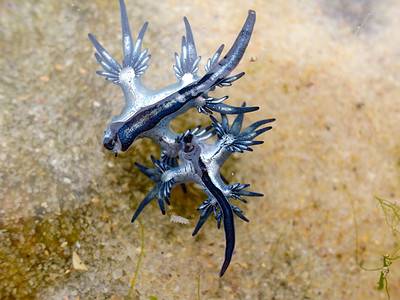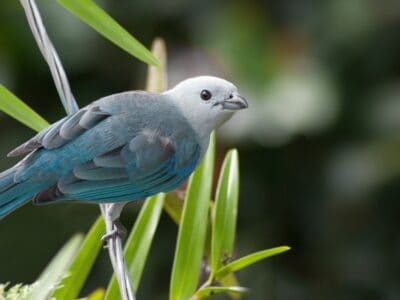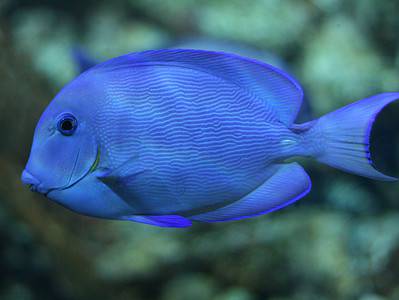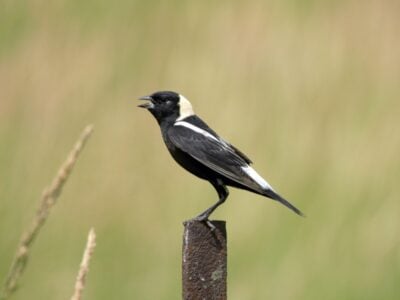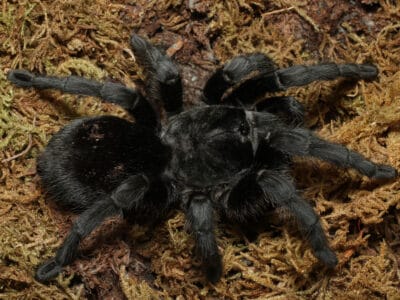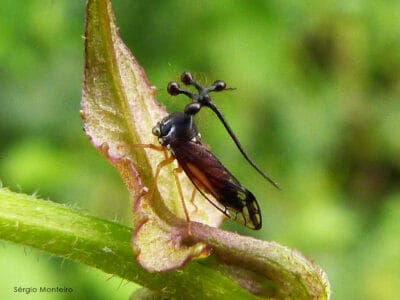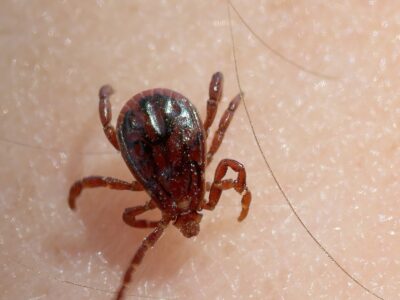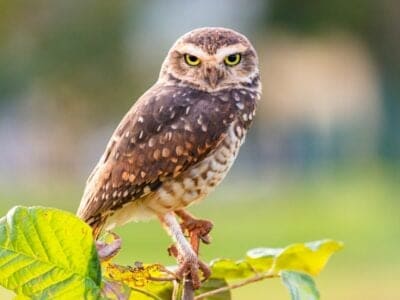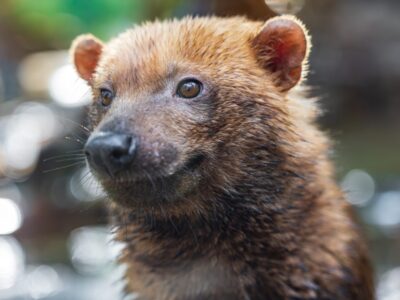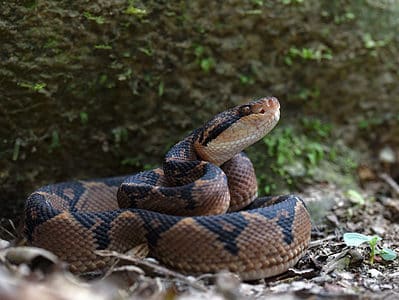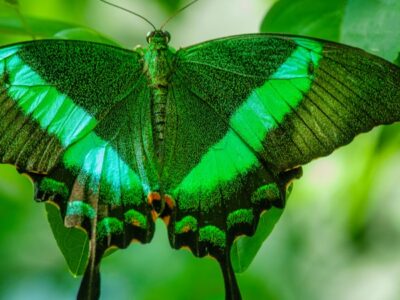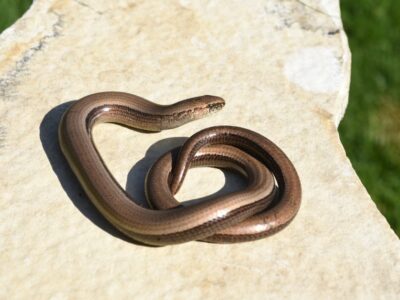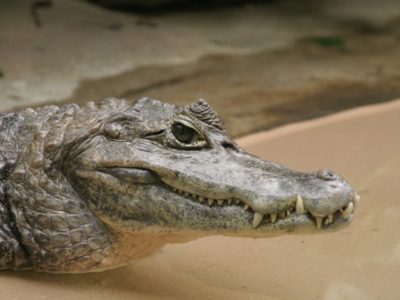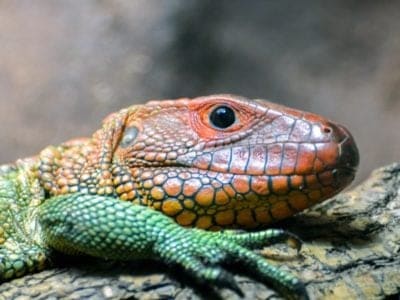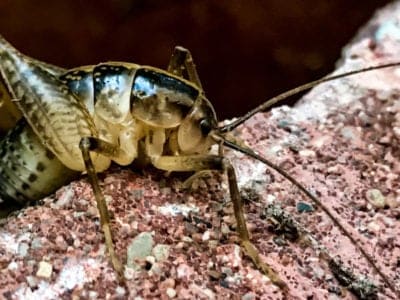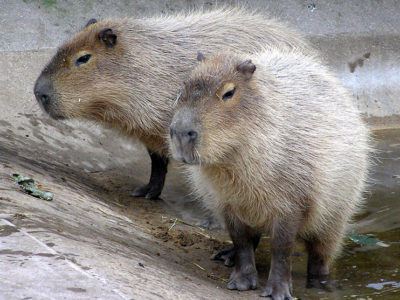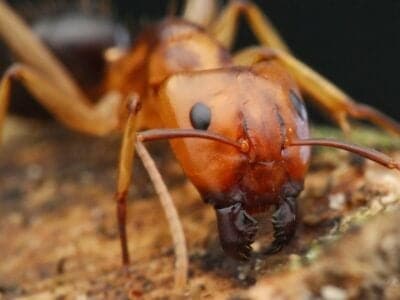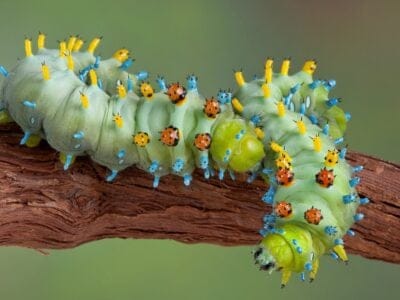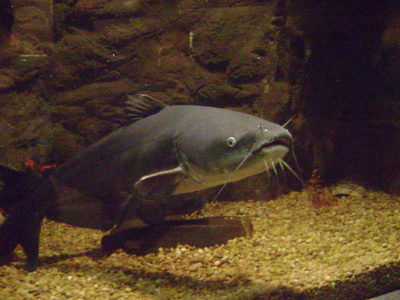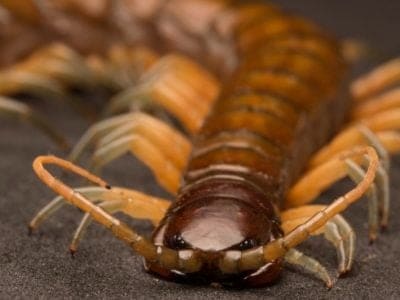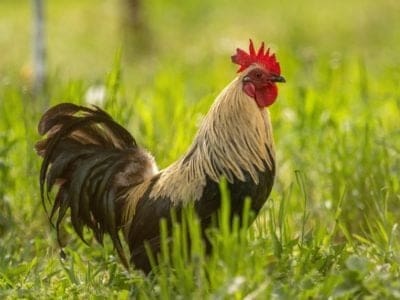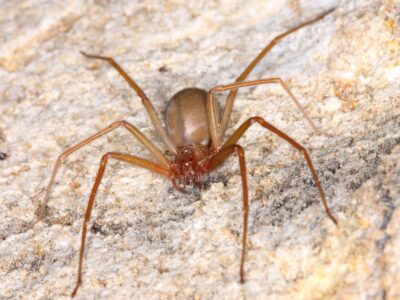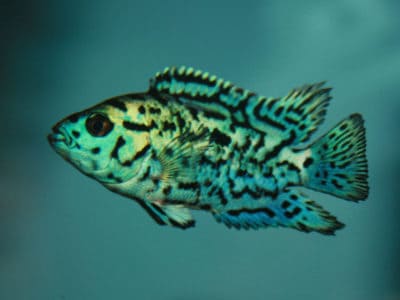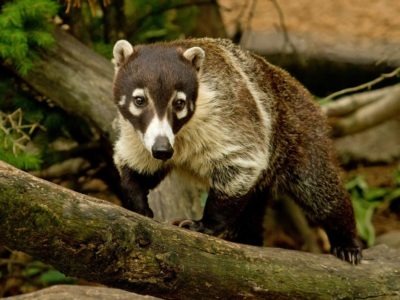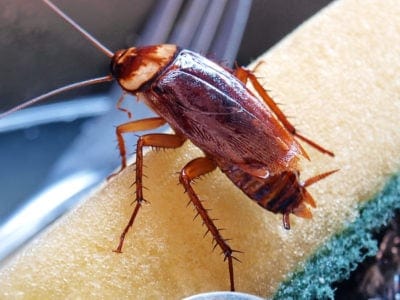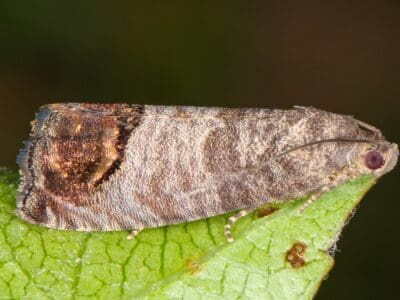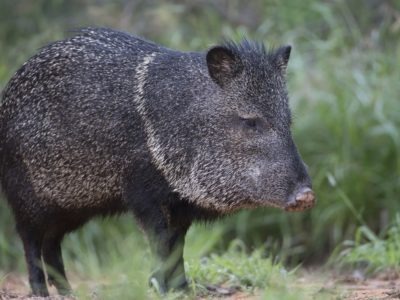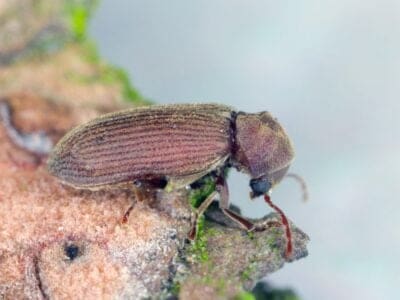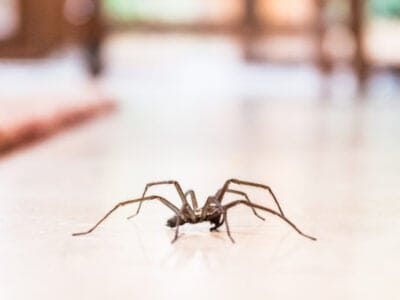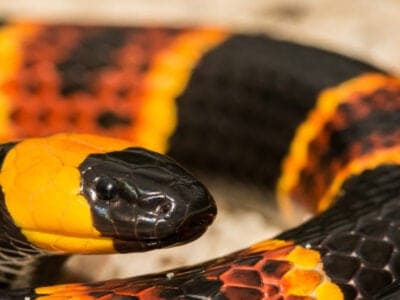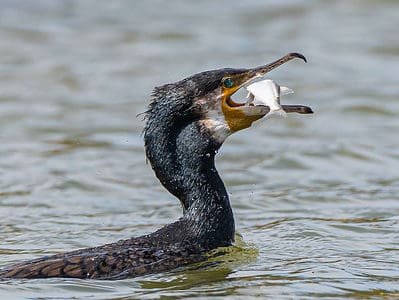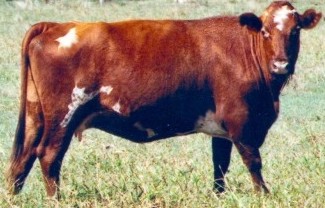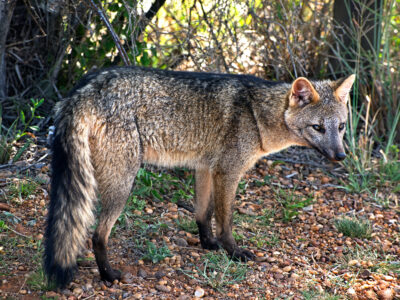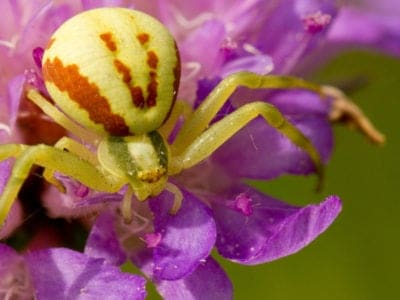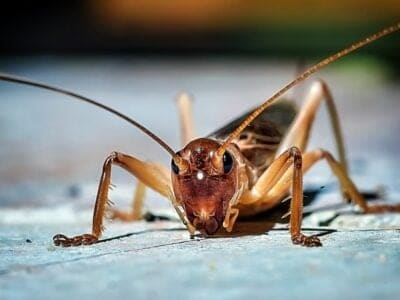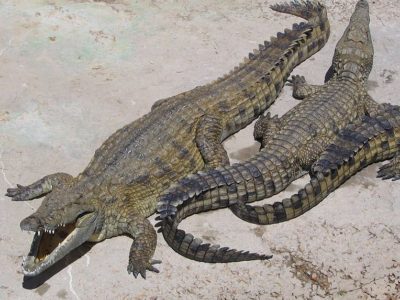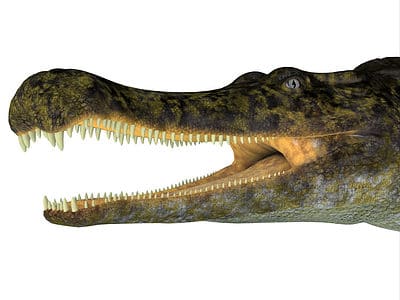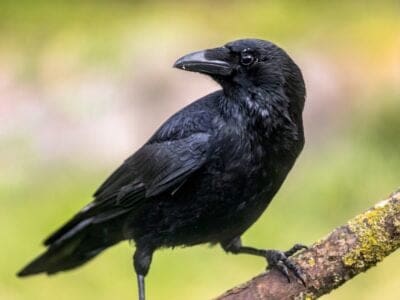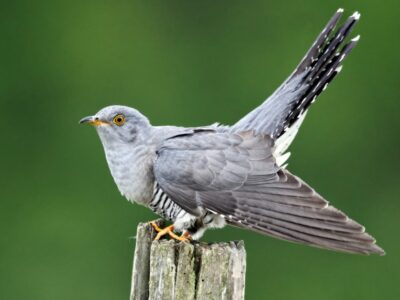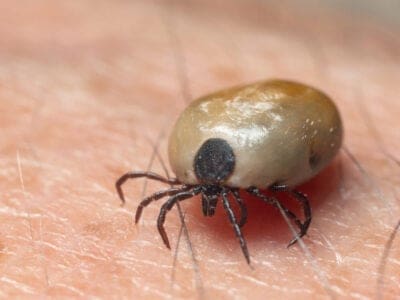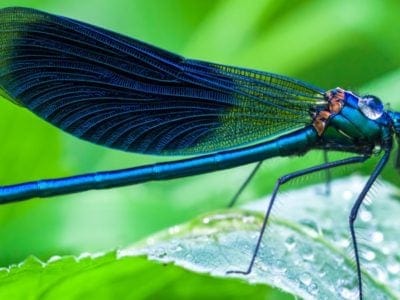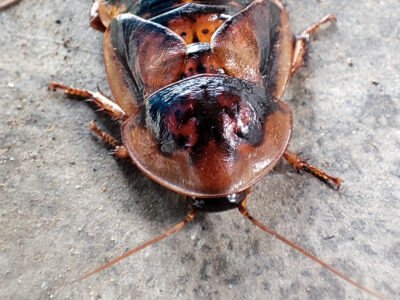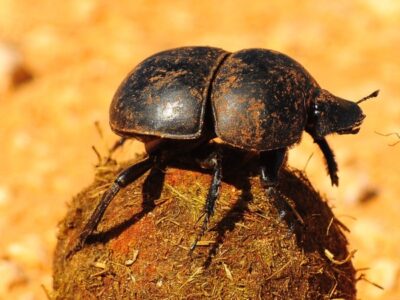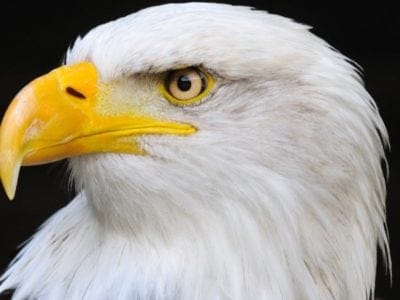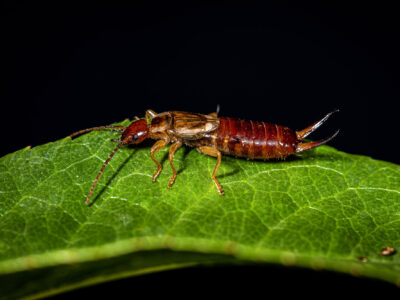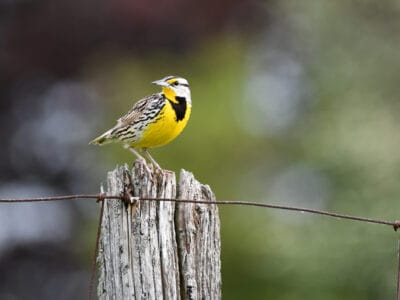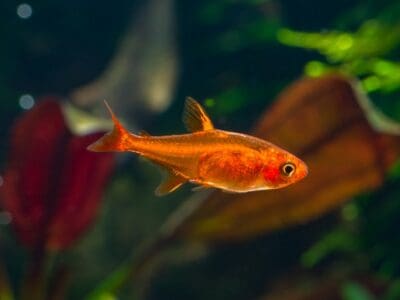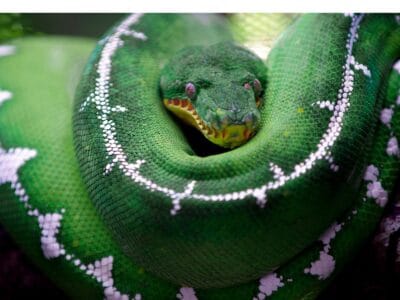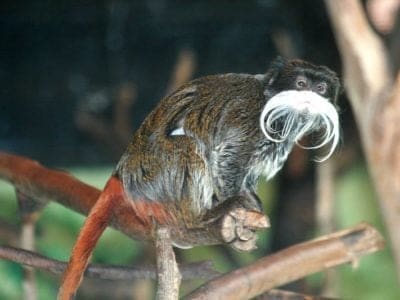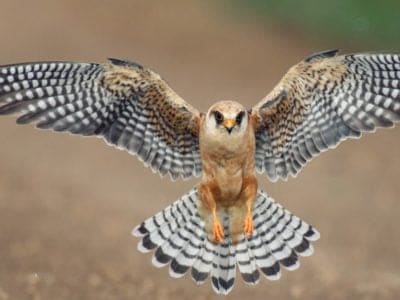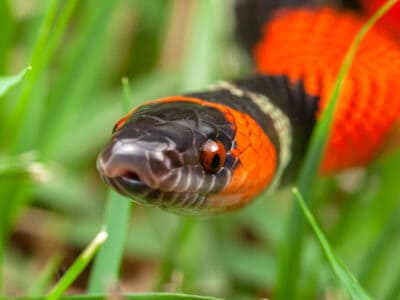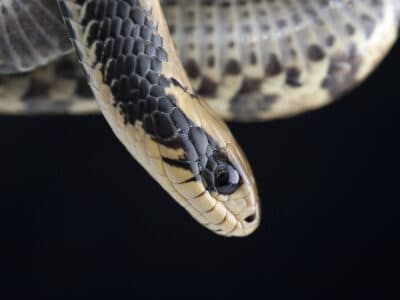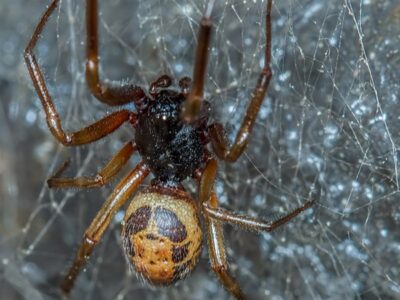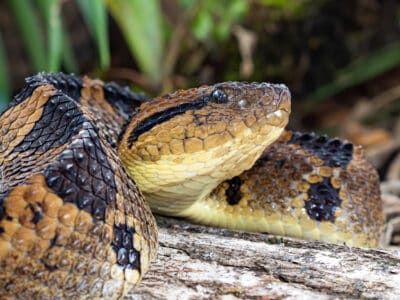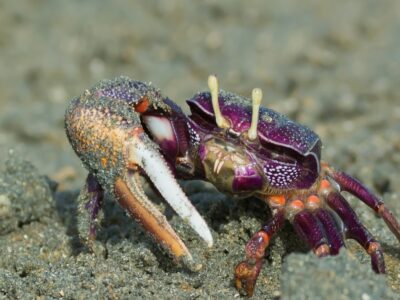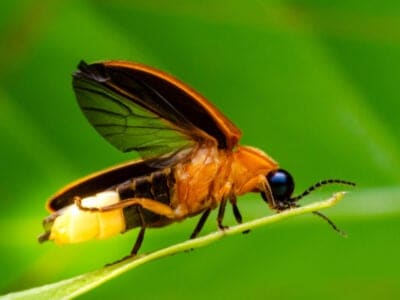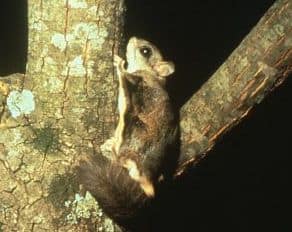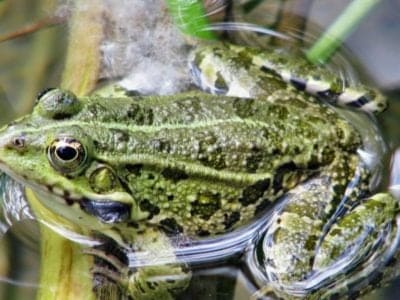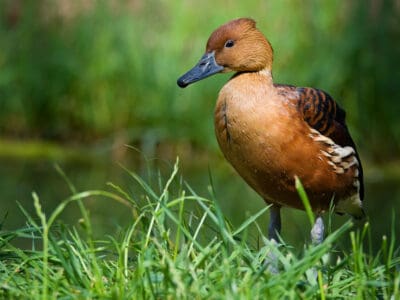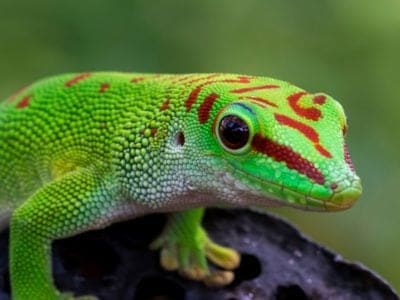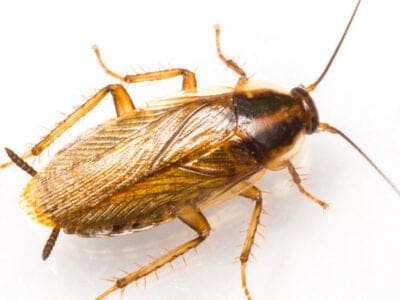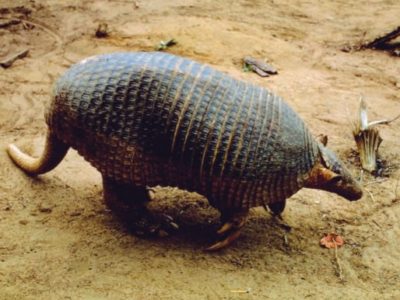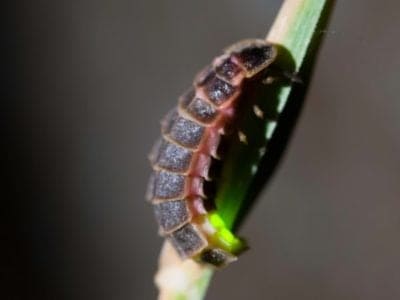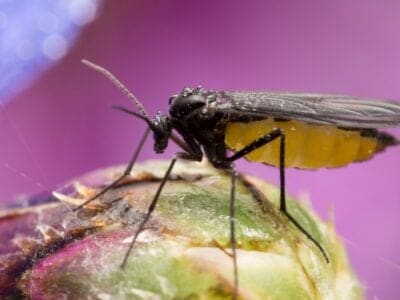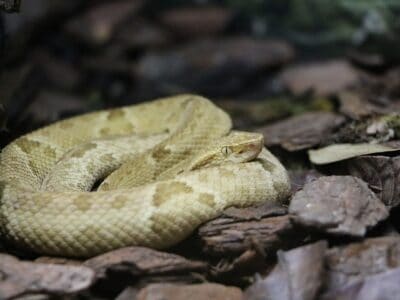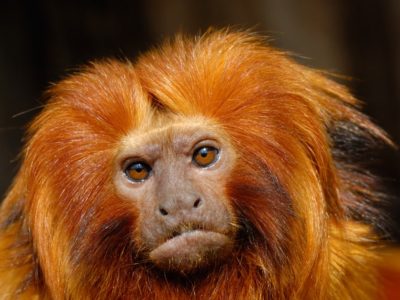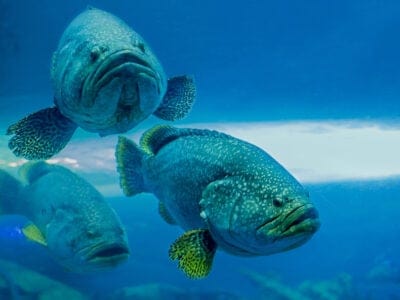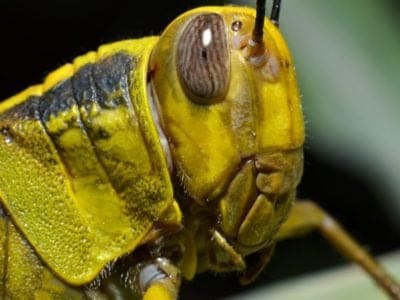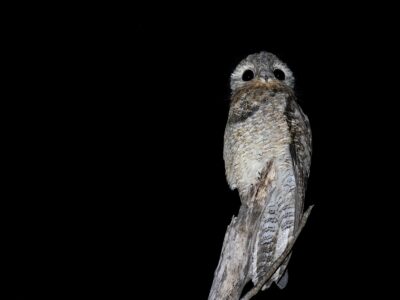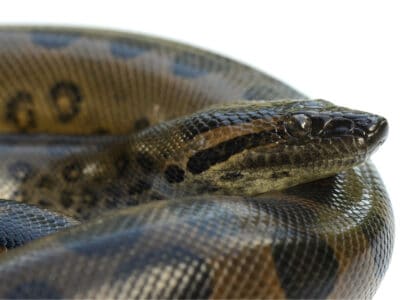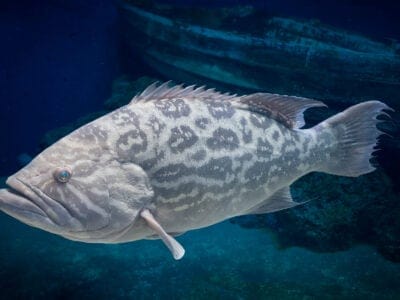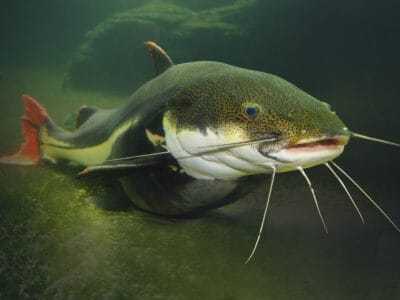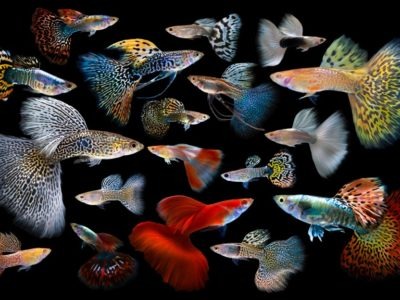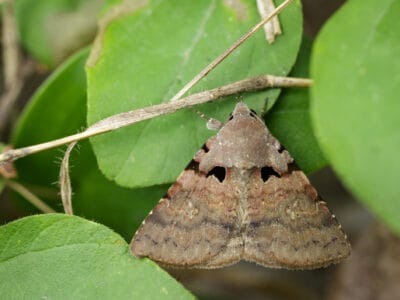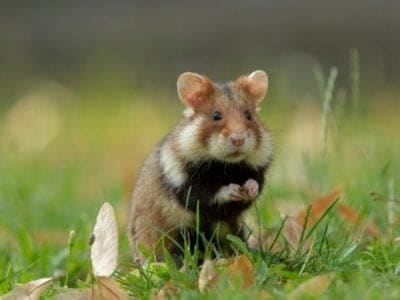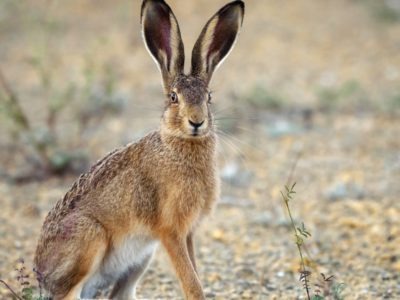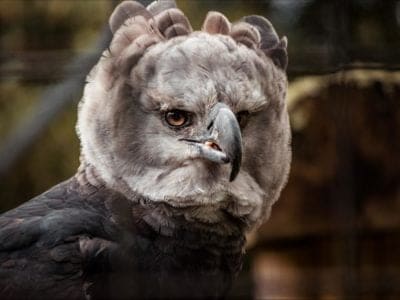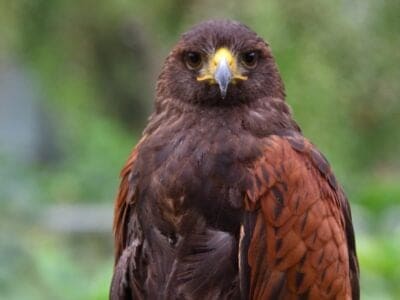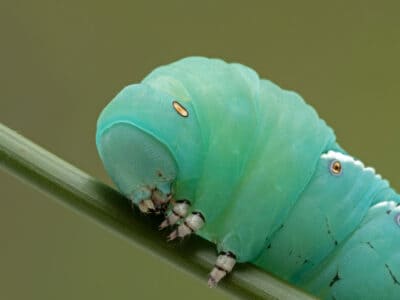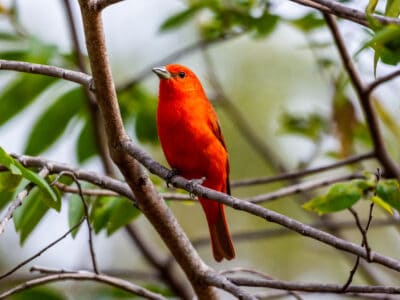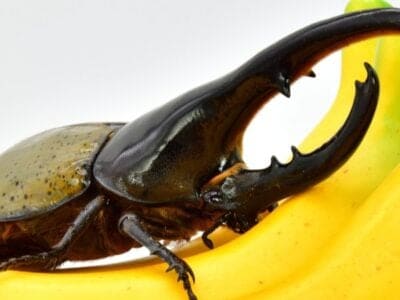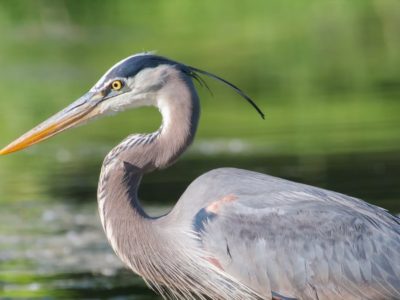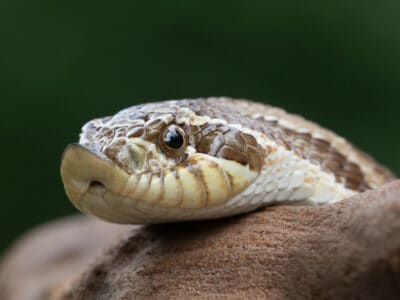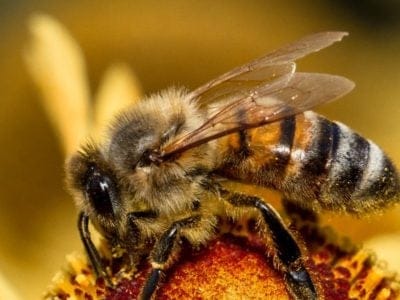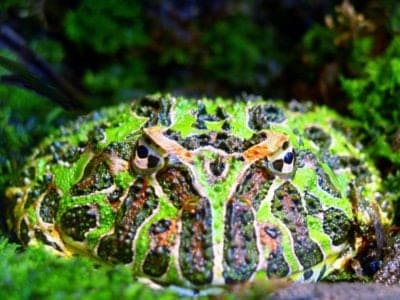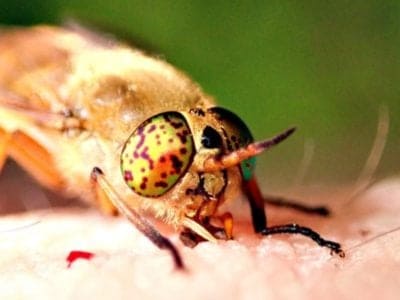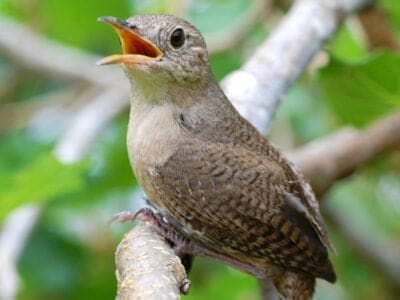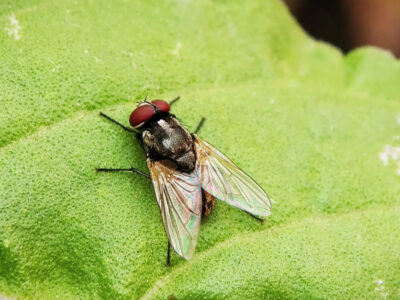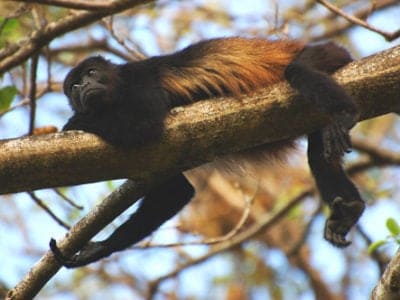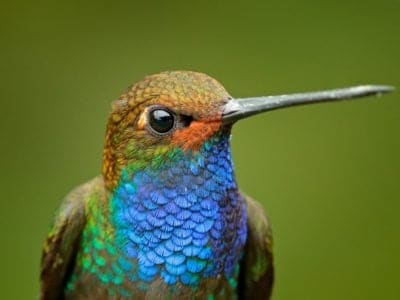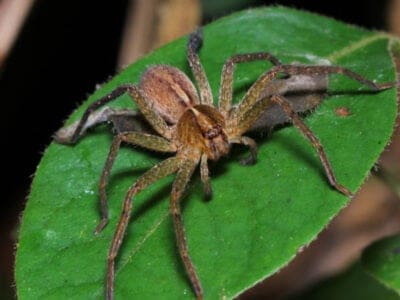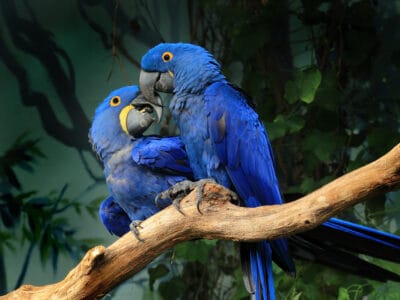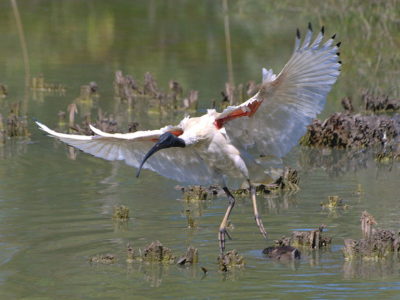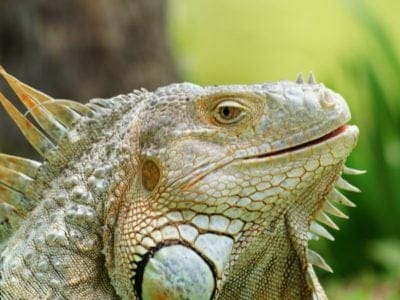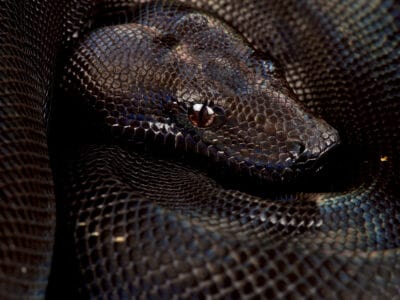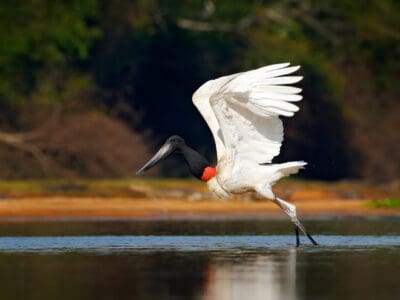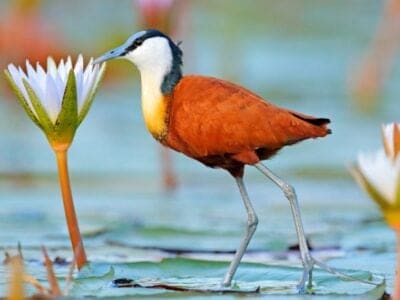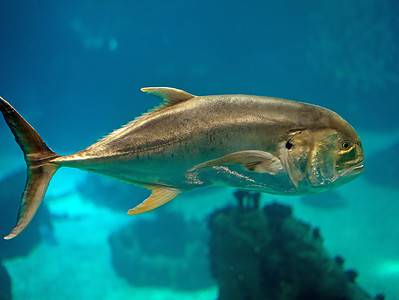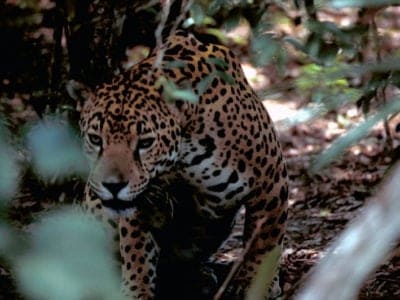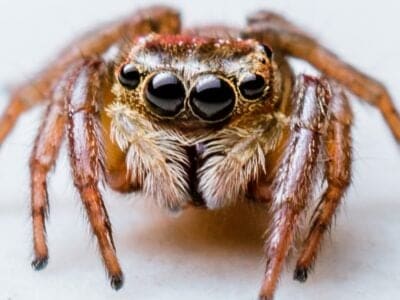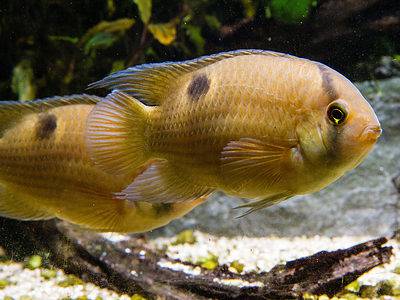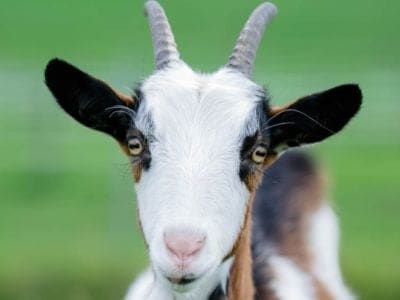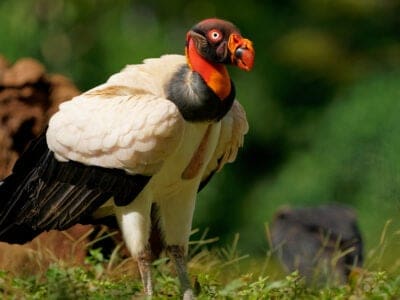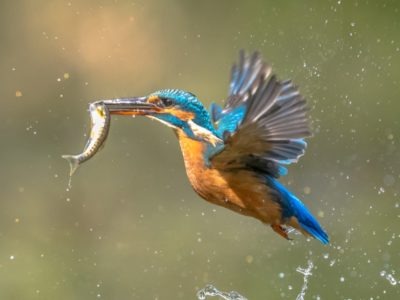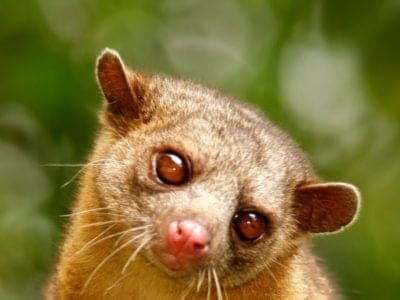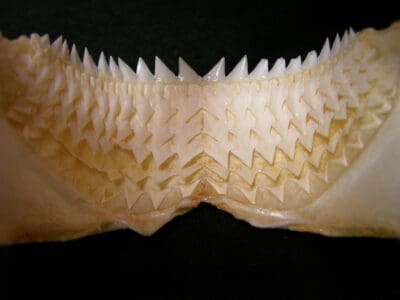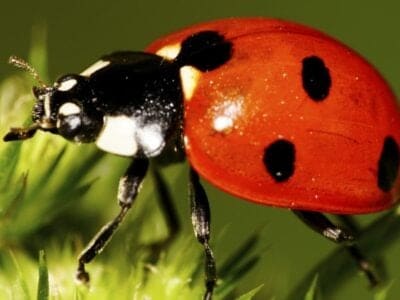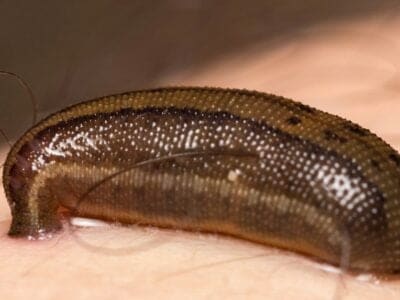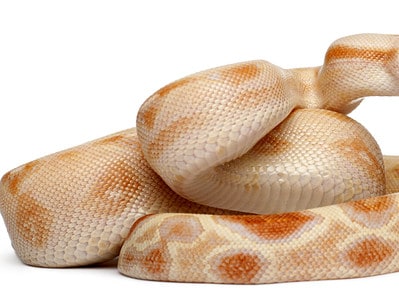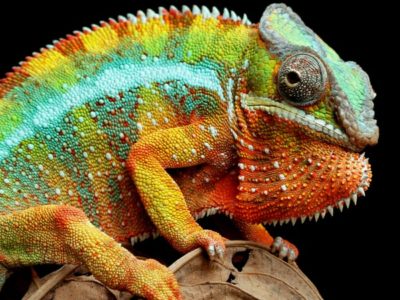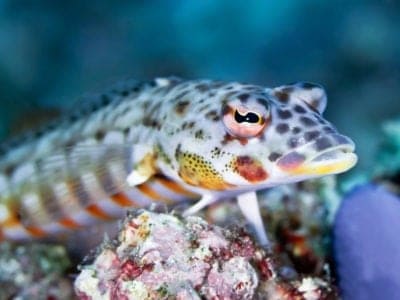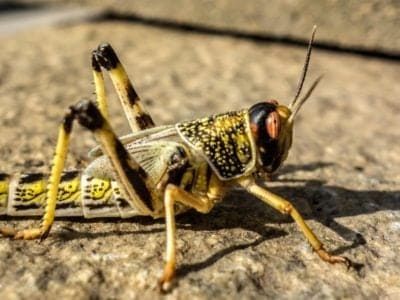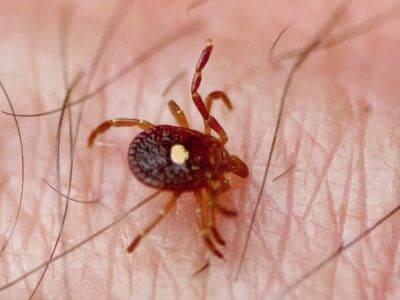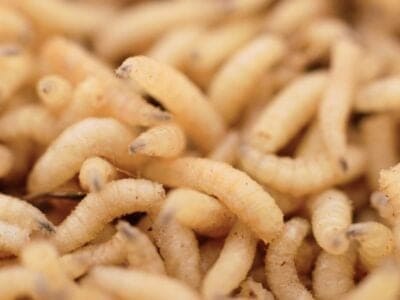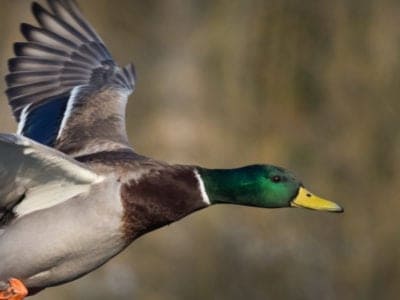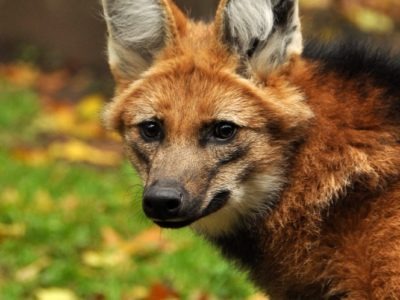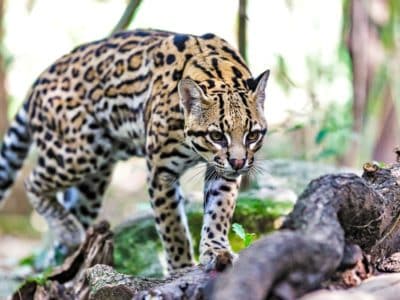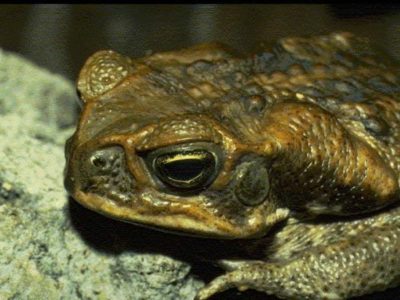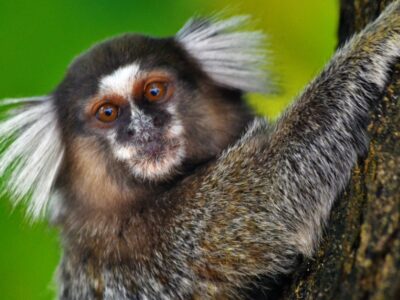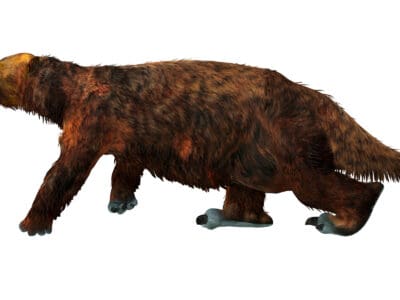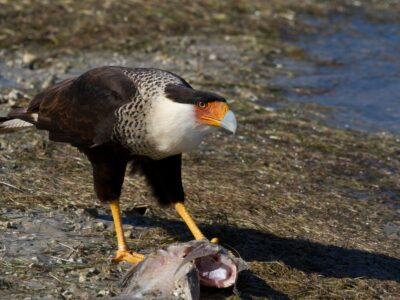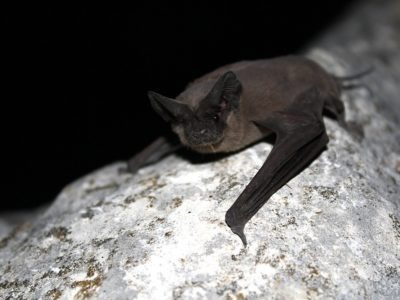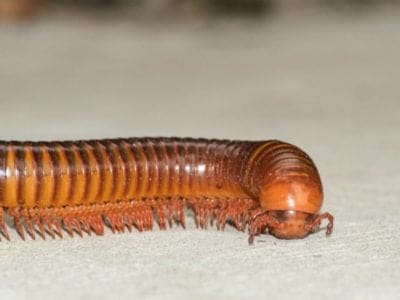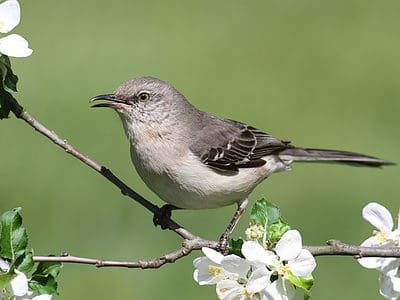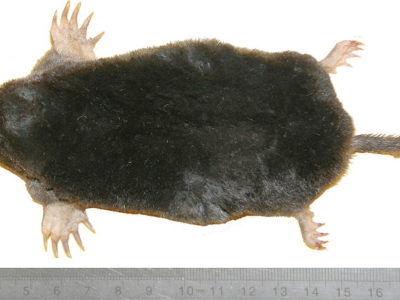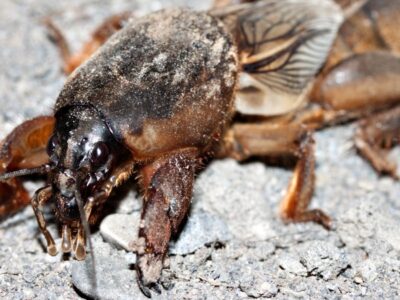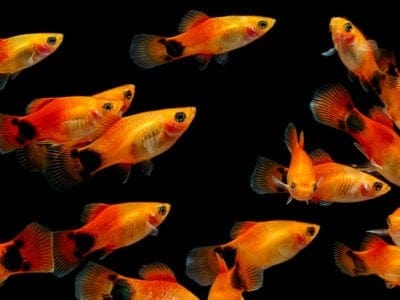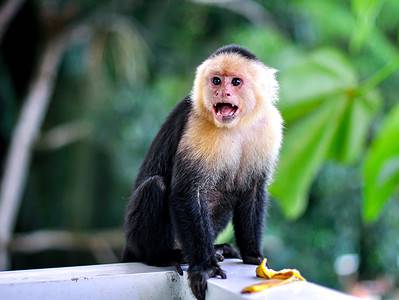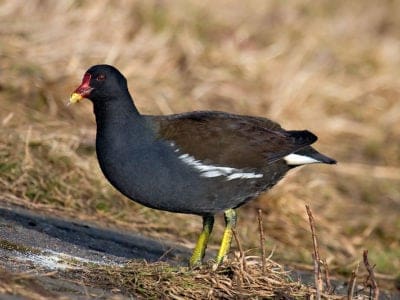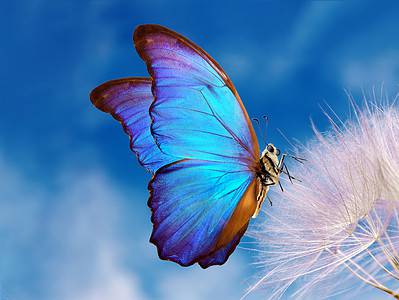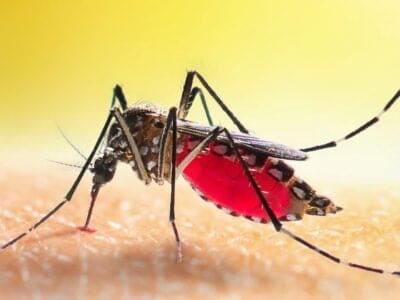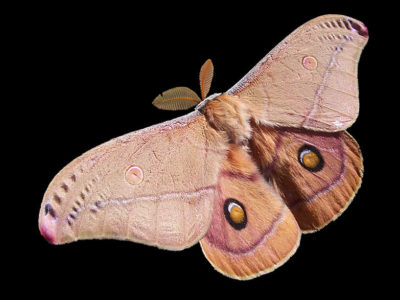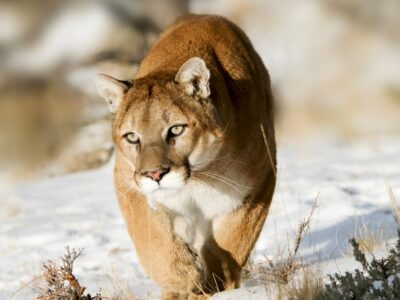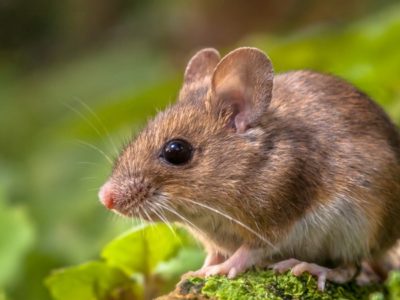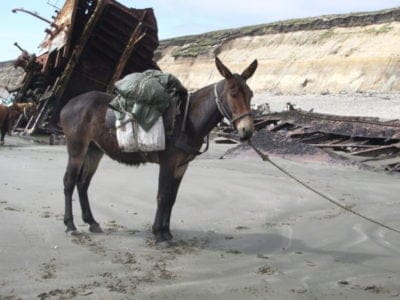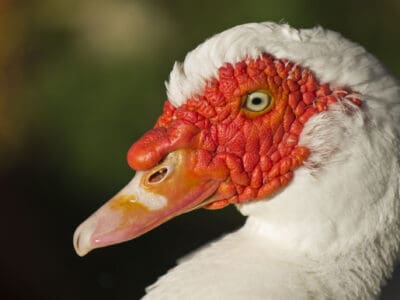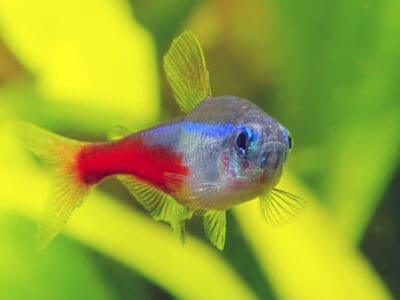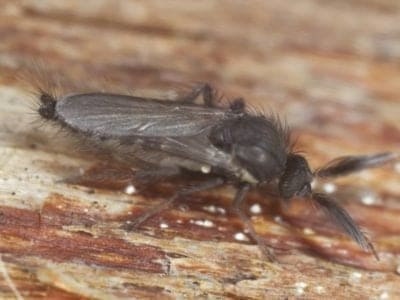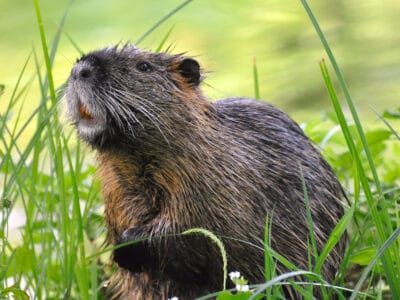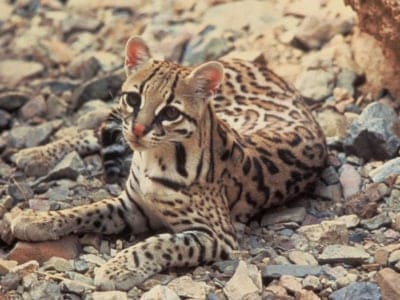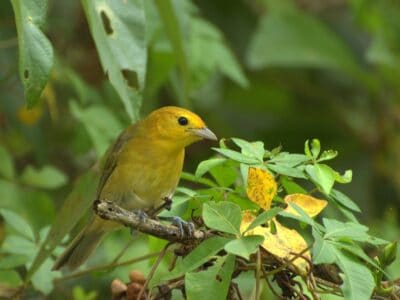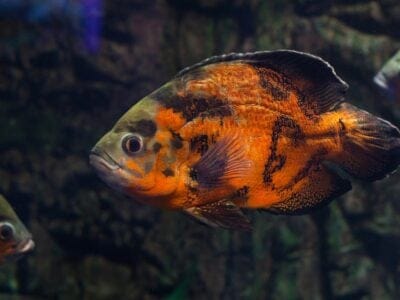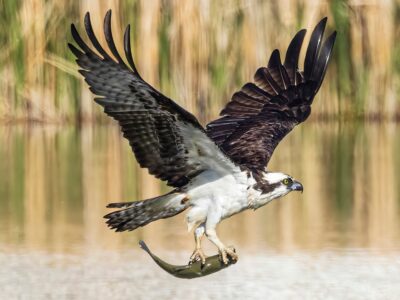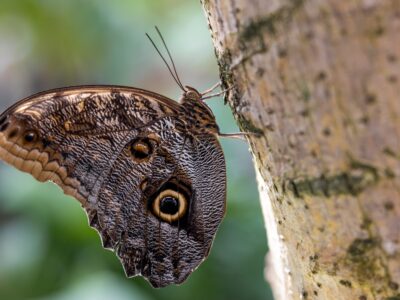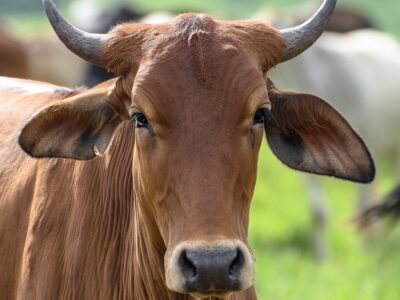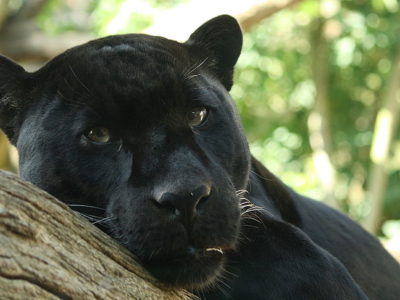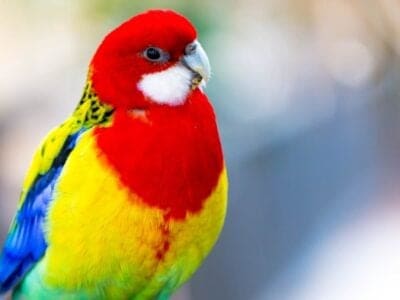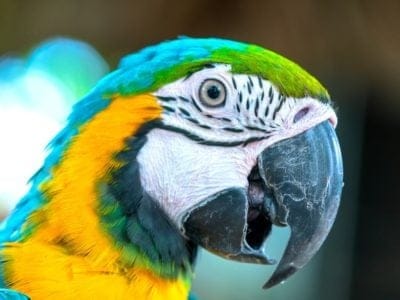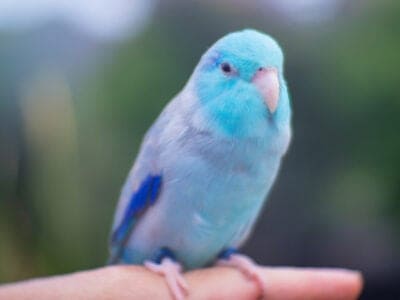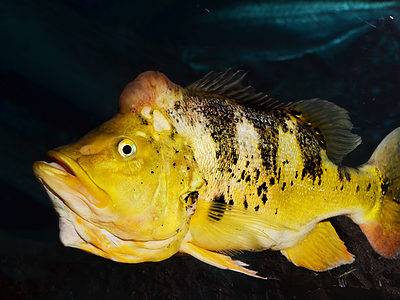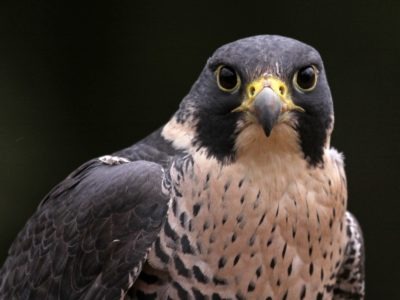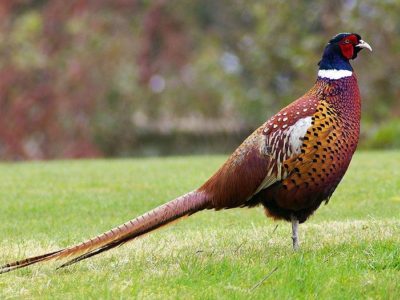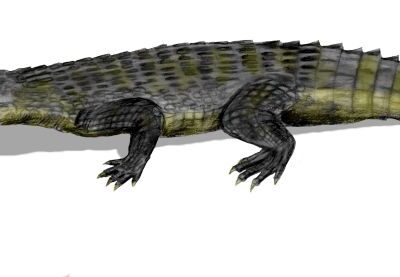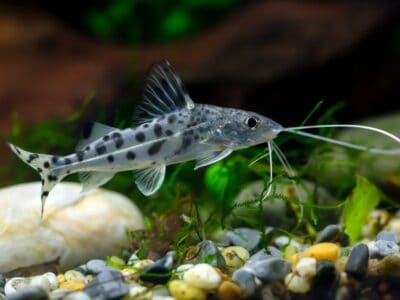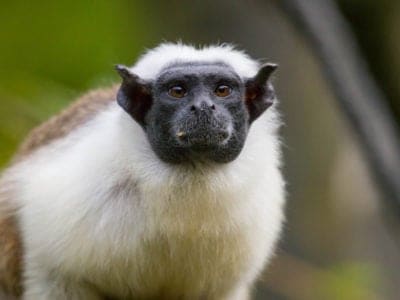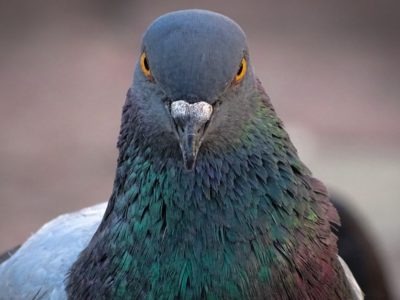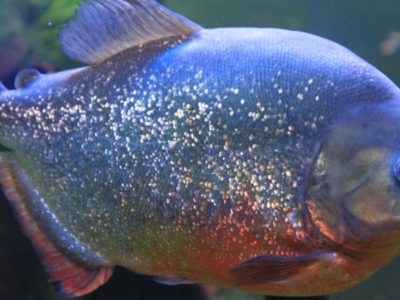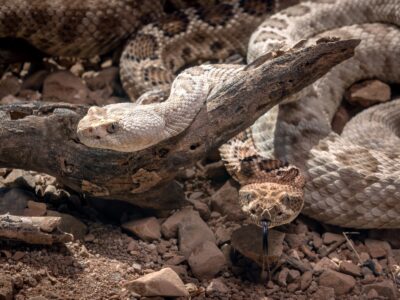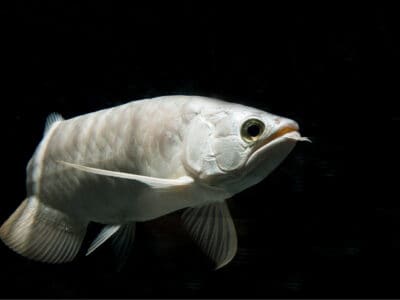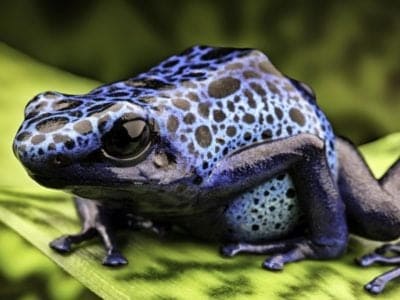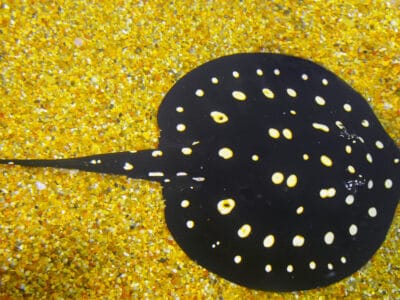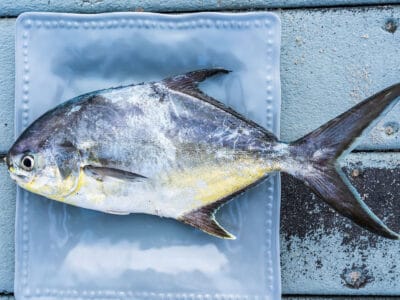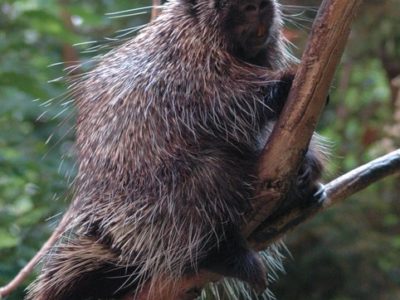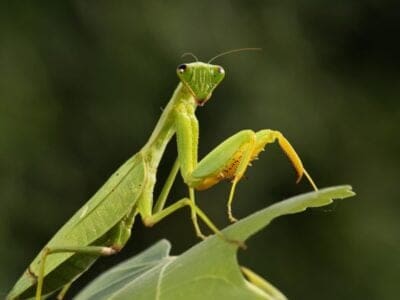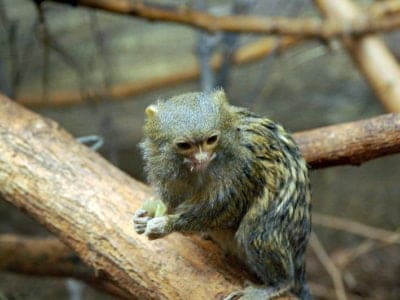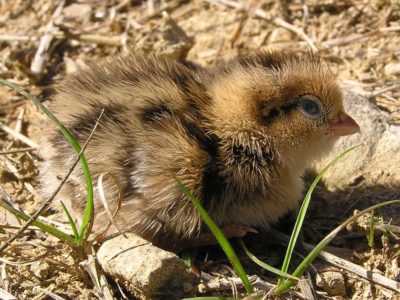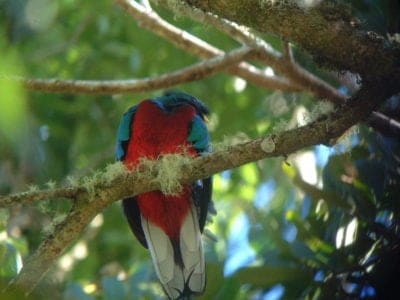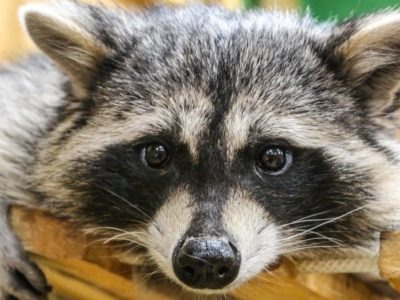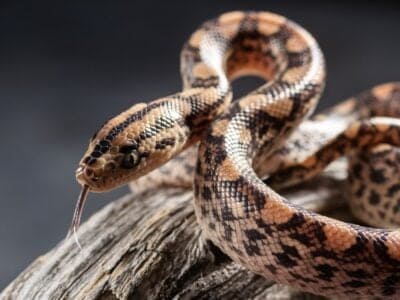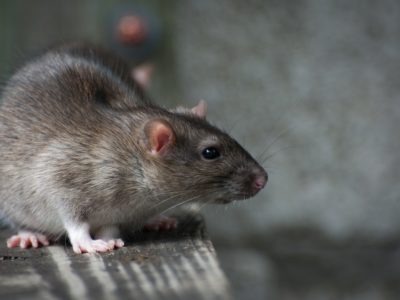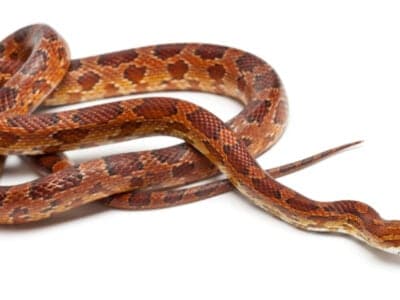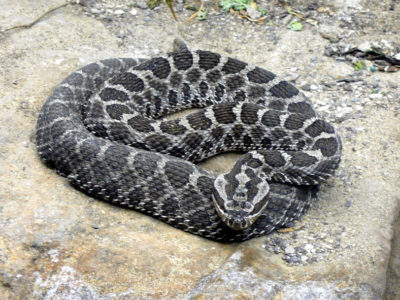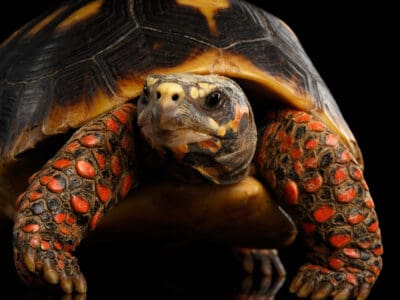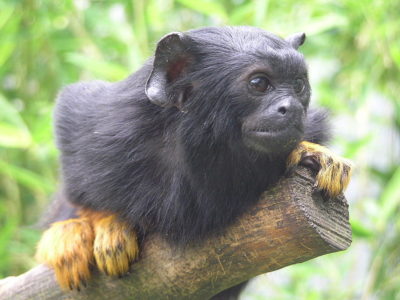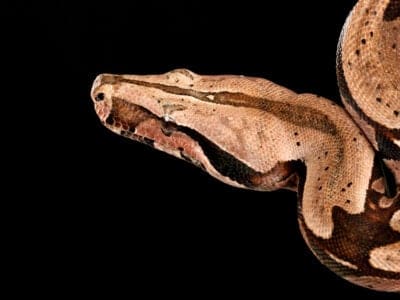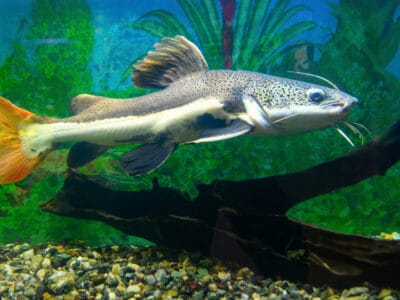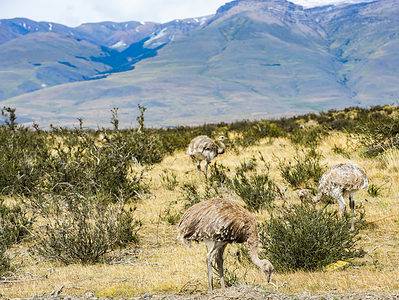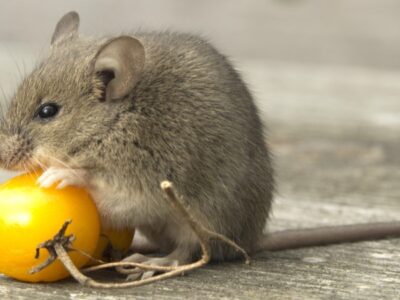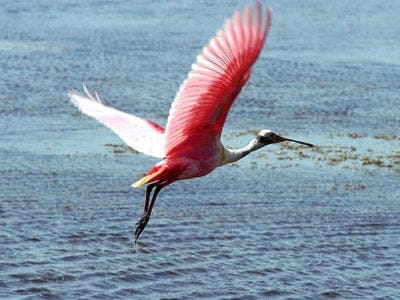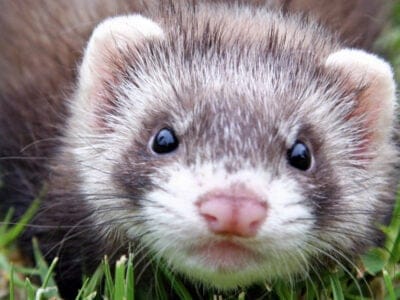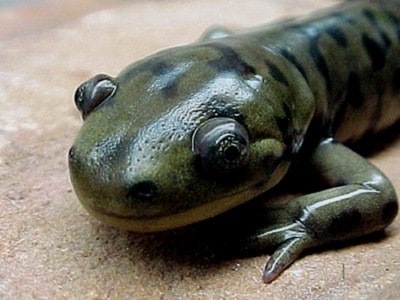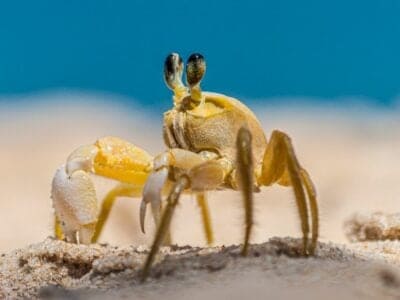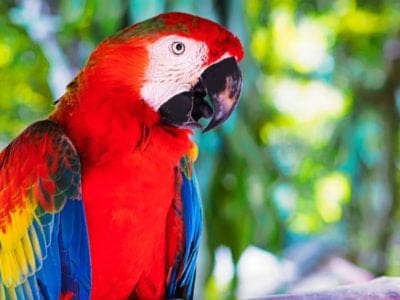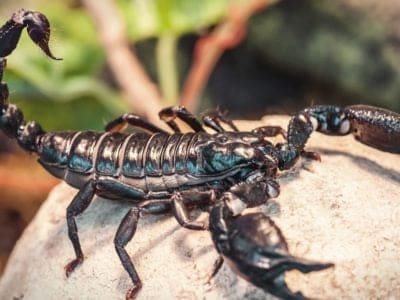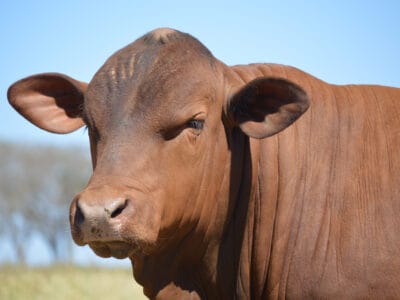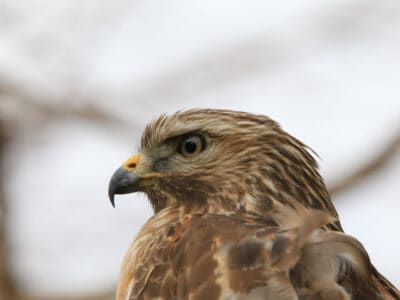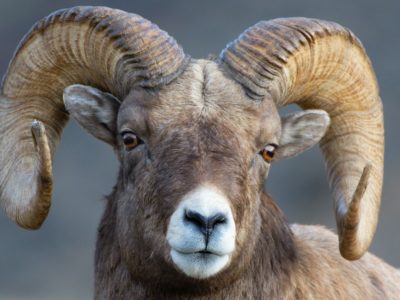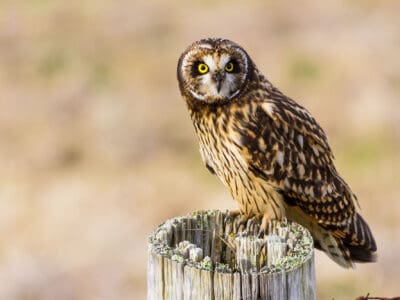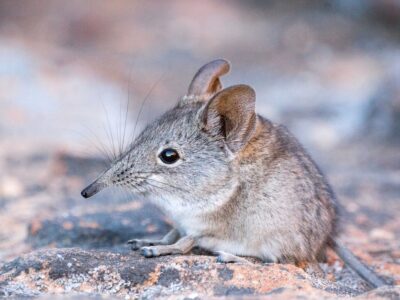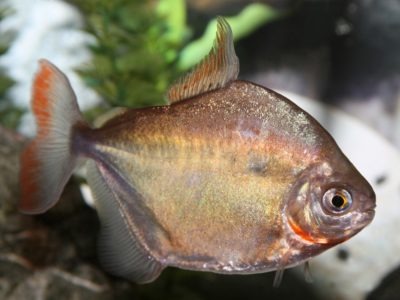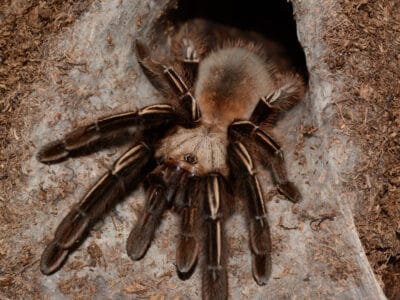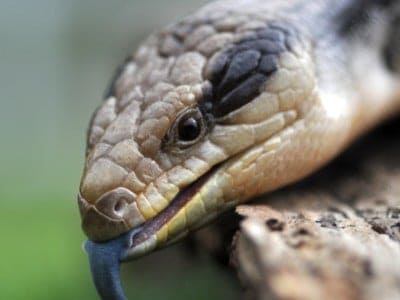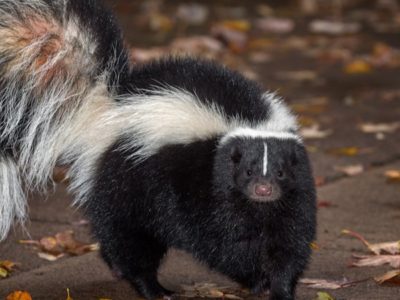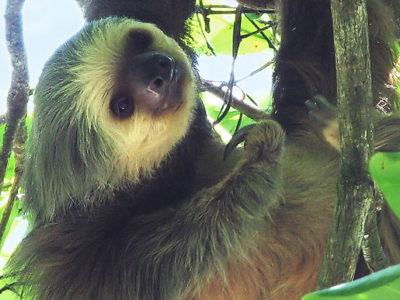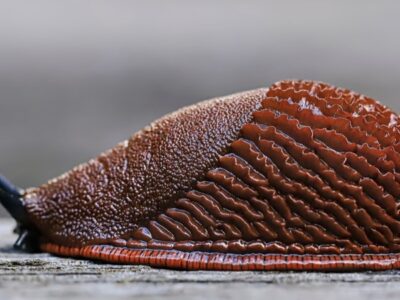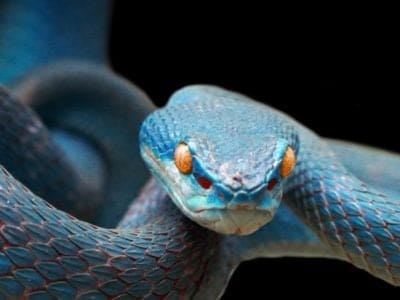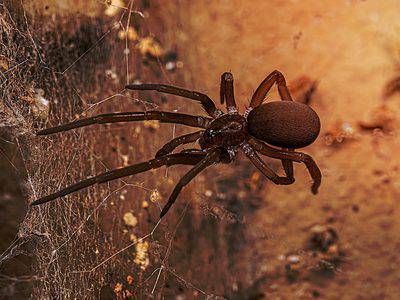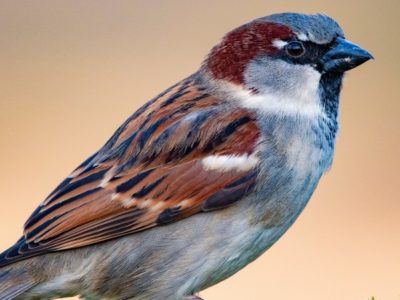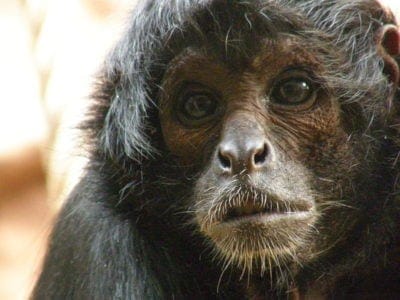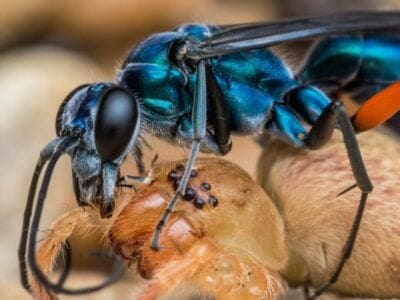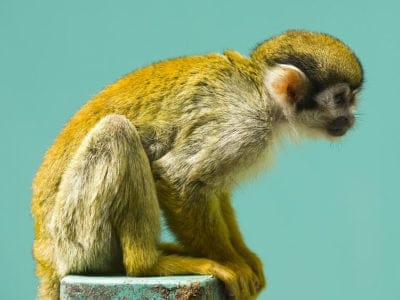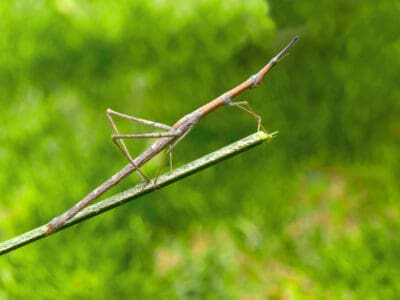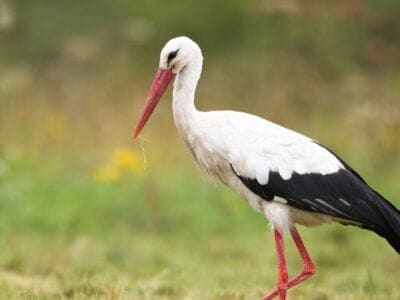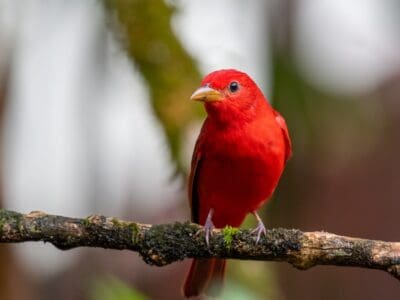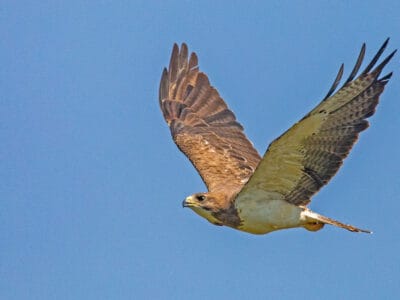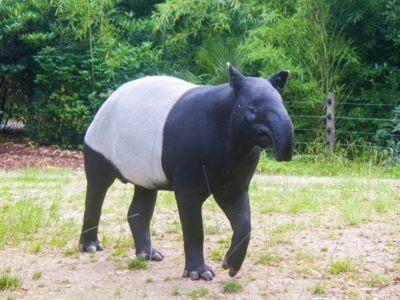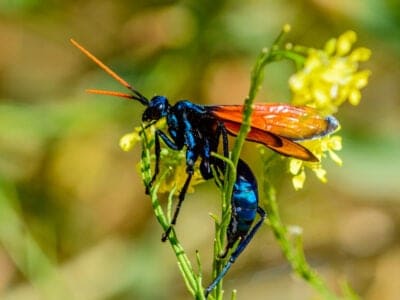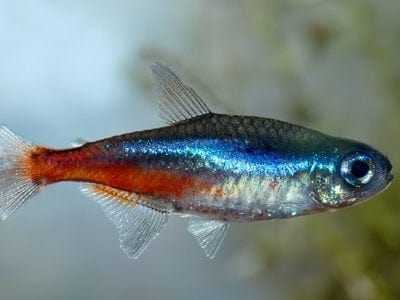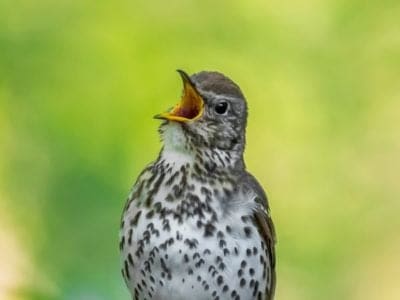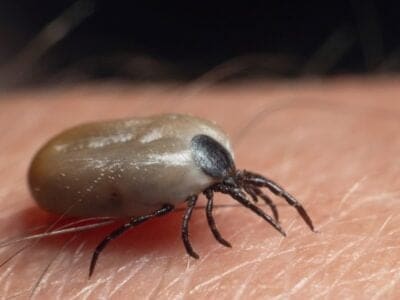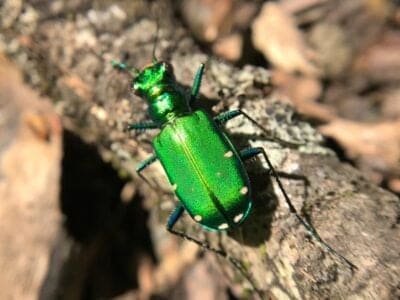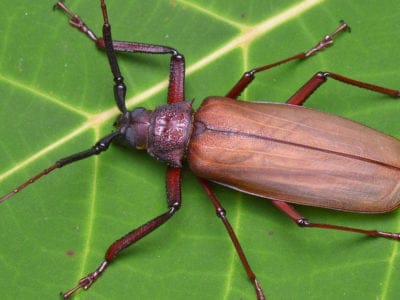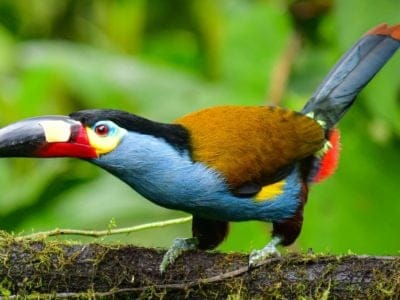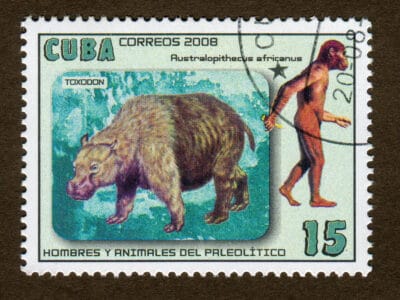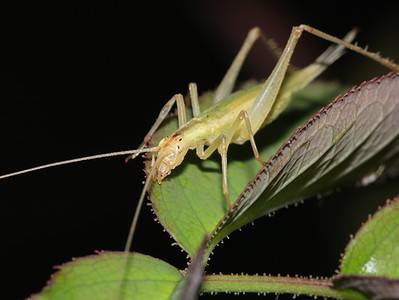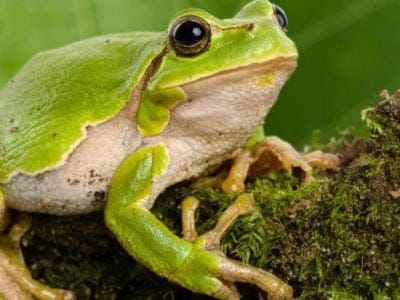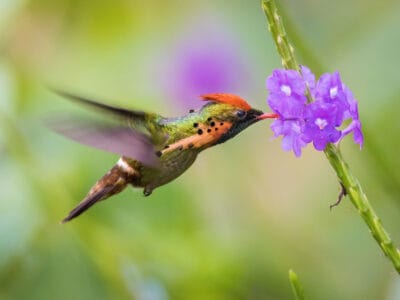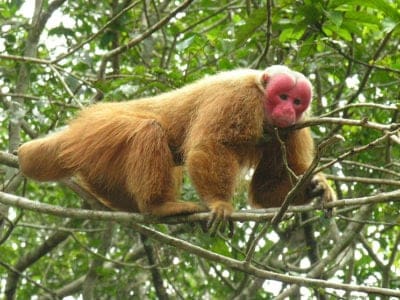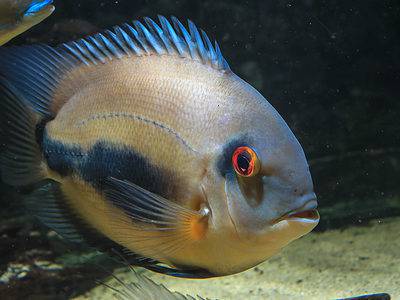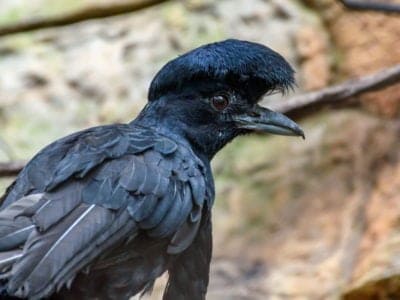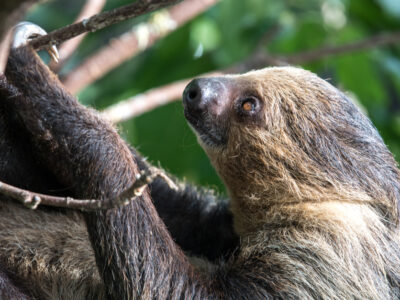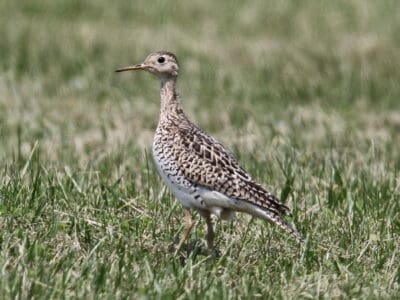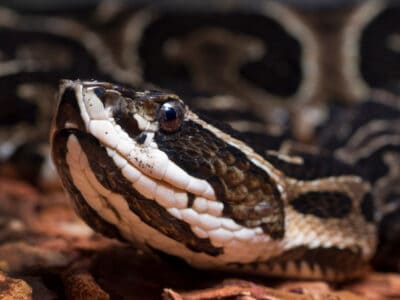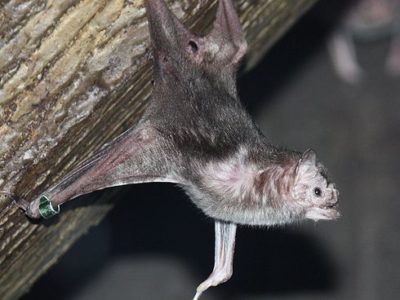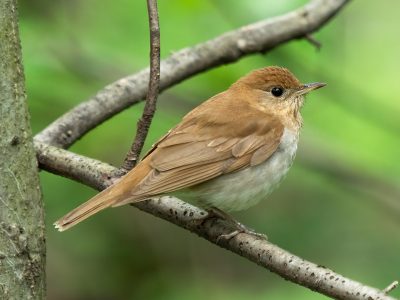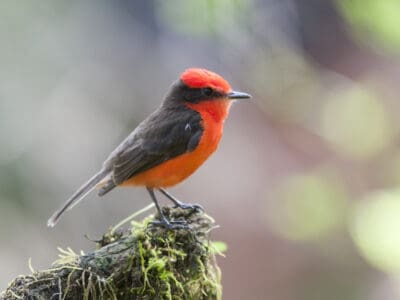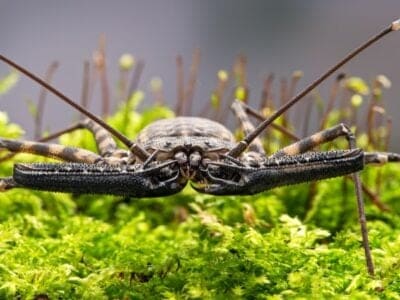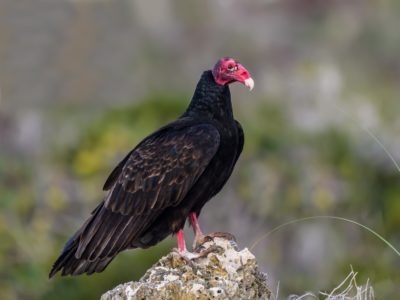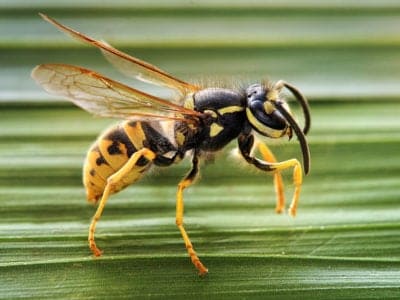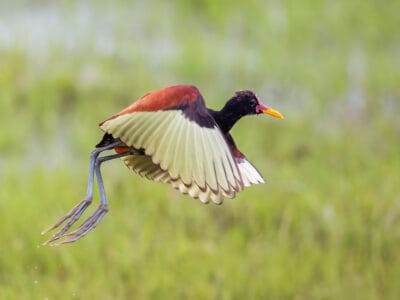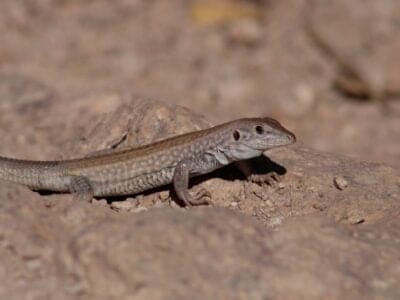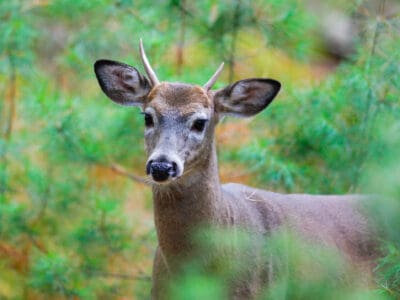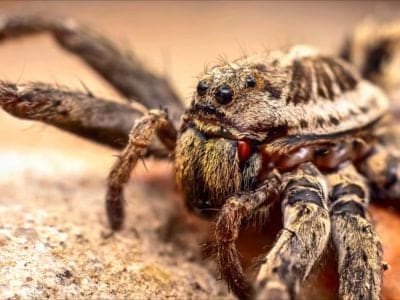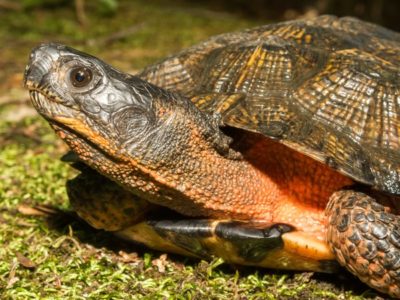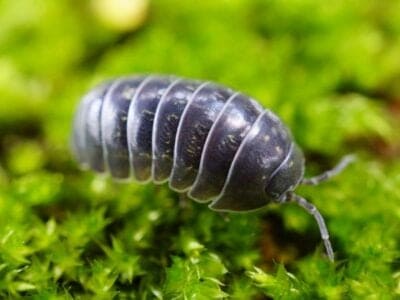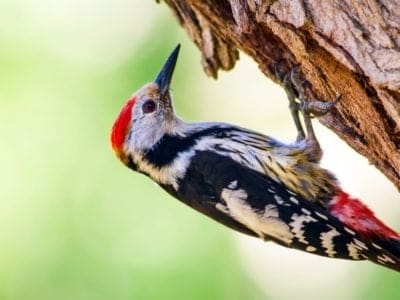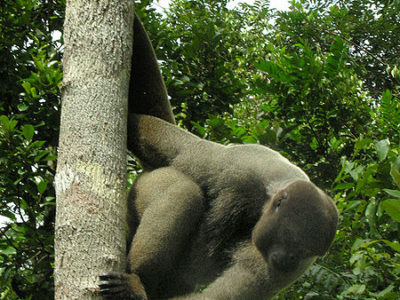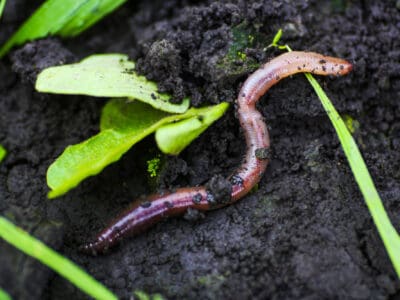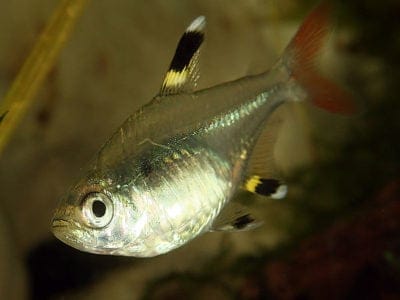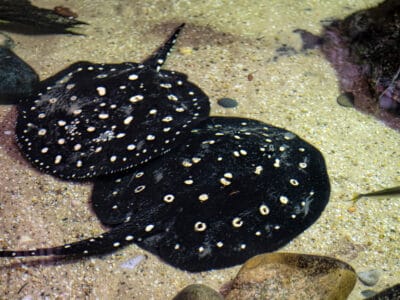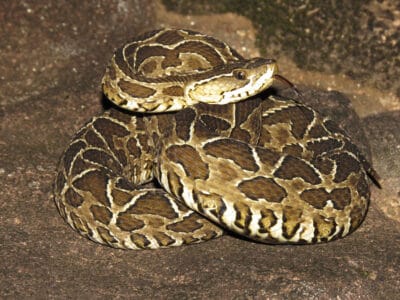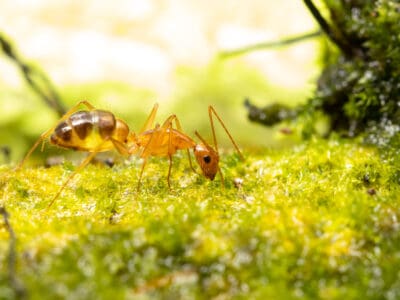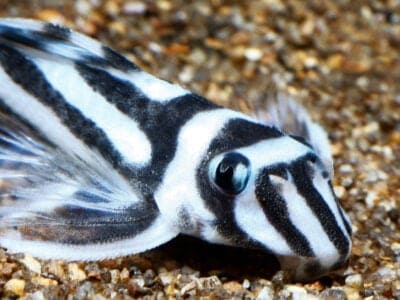Animals in Brazil (original) (raw)
Below you can find a complete list of Brazilian animals. We currently track 324 animals in Brazil and are adding more every day!
You can see many exotic animals in Brazil if you visit the forests, savannahs, and wetlands as each has different wildlife living in them. Brazil has one of the highest numbers of terrestrial vertebrates and invertebrates of any country in the world. At least 524 species of mammals, 3,000 fish species, and 78 species of primates. Additionally, there are at least 517 amphibian species, 3,150 butterfly species, and 1,622 bird species. There are over 200 endangered species in the country, with over 80% of them living in the Atlantic Forest. Yet, over 90% of this forest has been cleared. Poaching remains a massive problem in the country.
The Official National Animal of Brazil
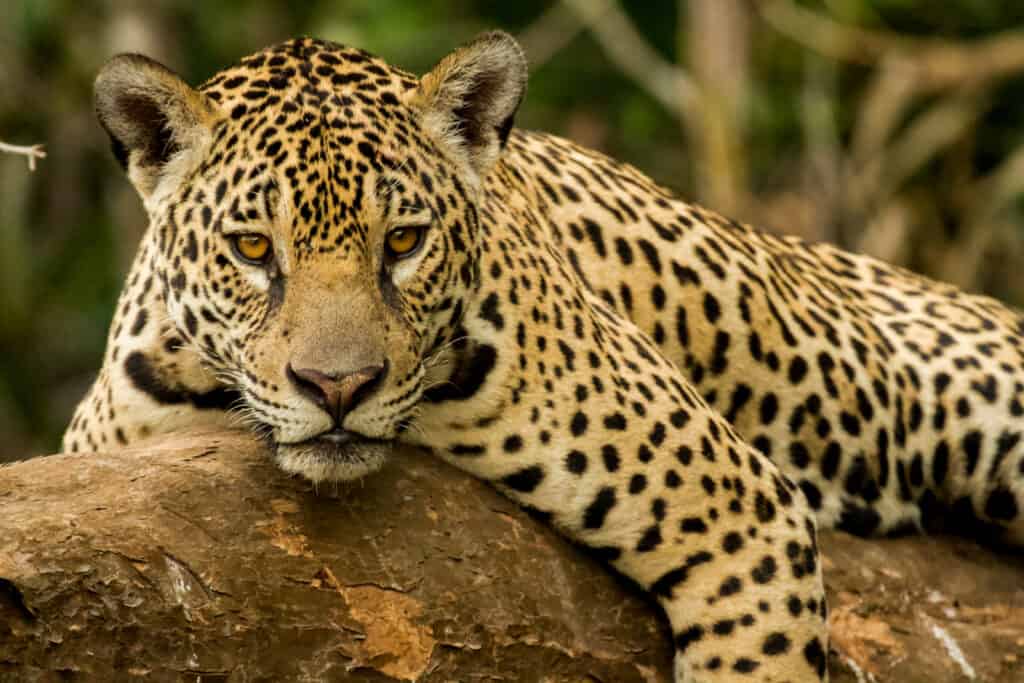
Jaguar is the unofficial national animal of Brazil.
©Pedro Helder Pinheiro/Shutterstock.com
Brazil does not have an official national animal. Yet, many people consider it the jaguar, which is also called the Brazilian panther. This national animal is seen as the top animal of the forest ecosystem. It is a solitary animal that quietly stalks its prey. In many ways, the national animal is like the people of Brazil. The country tends to be very independent and takes great pride in its territorial resources.
Where To Find The Top Wild Animals in Brazil
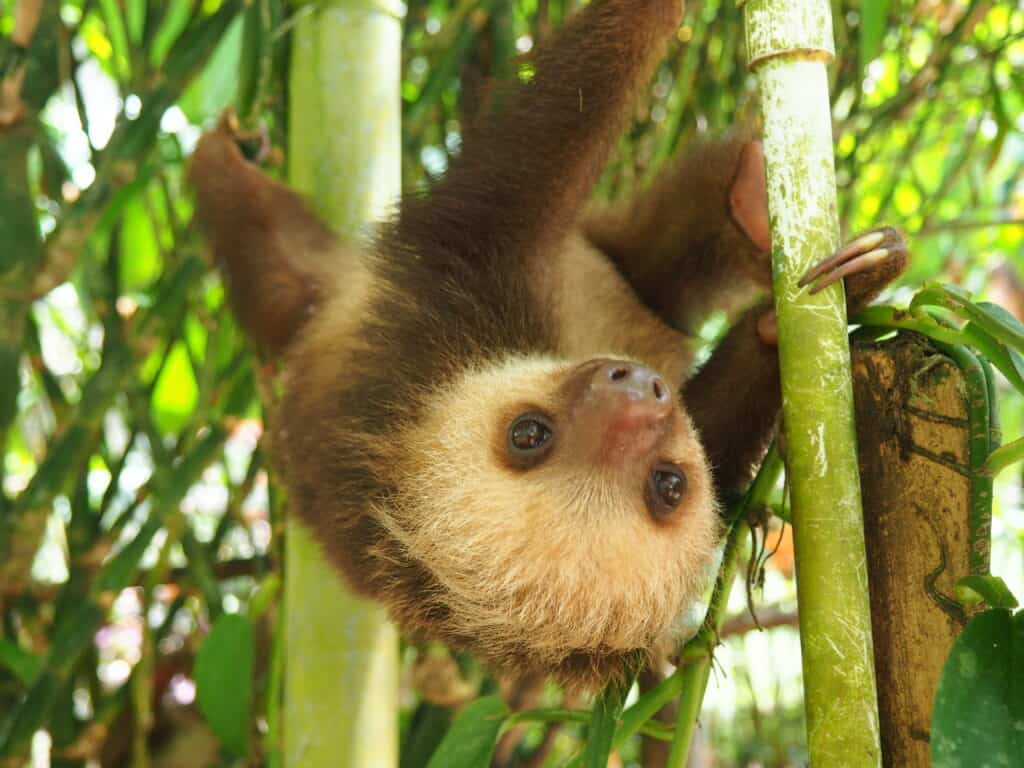
If you are lucky, you can see a sloth when you visit Brazil.
©Kristel Segeren/Shutterstock.com
In Brazil, amazing wildlife can be seen in a variety of places. One popular destination for animal viewing is the Pantanal, located mainly in Mato Grosso and Mato Grosso do Sul states. The largest wetland in the world, the Pantanal offers visitors a chance to see giant river otters, jaguars, marsh deer, and capybara, among other species native to this region.
The Amazon rainforest also provides many opportunities for viewing wild animals, such as howler monkeys and toucans. This area is home to an incredible diversity of life, with over 2 million insect species alone! Other animals commonly spotted include tapirs, sloths, and anacondas which make their homes there amongst thousands of plant species from trees to lianas. Whether you take part in organized tours or explore on your own using boats or canoes, you are sure to have unforgettable experiences observing wildlife in its natural habitat.
Tourists often come to Brazil to see the top wildlife. Unfortunately, some of the weird and unique animals are in danger of becoming extinct. These unique animals include:
- Jaguar –The jaguar lives in various ecosystems in Brazil, including rainforests, savannas, and grasslands. Look for them in the Amazon Basin and the Brazilian Pantanal.
- Giant armadillo – You can find this elusive animal in many areas of Brazil, including the Amazon, Atlantic Forest, and Cerrado biomes. Still, it may be going extinct in the southern part of Brazil.
- Brazilian tapir – This species of the rhinoceros family is in great danger of going extinct, but look for them in the Pantanal.
- Giant anteater – You can find giant anteaters in many parts of Brazil, including Goiás, Mato Grosso do Sul, Mato Grosso, Tocantins, Minas Gerais, and the Federal District.
- Maned wolf – You may be able to catch a glimpse of this solitary nocturnal hunter in Brazil’s grasslands, scrub prairies, forests, or savannas, especially in the Cerrado.
- Giant otter – This animal lives along creeks and rivers in the Amazon rainforest
- Ocelot – Look for ocelots stalking prey from trees or grasslands in the Amazon Rainforest.
- Common marmoset – This small primate that seldom grows to be over 7 inches tall lives in Sugarloaf Mountain and Tijuca National Park.
- Capybara – Look for capybaras, the largest member of the rodent family, in many locations, including the Amazon Rainforest and city rivers.
- Southern Tamandua – Look for southern tamanduas dining on insects in tropical forests, mangroves, and savannas, like the Brazilian Pantanal.
The Most Dangerous Animals In Brazil Today
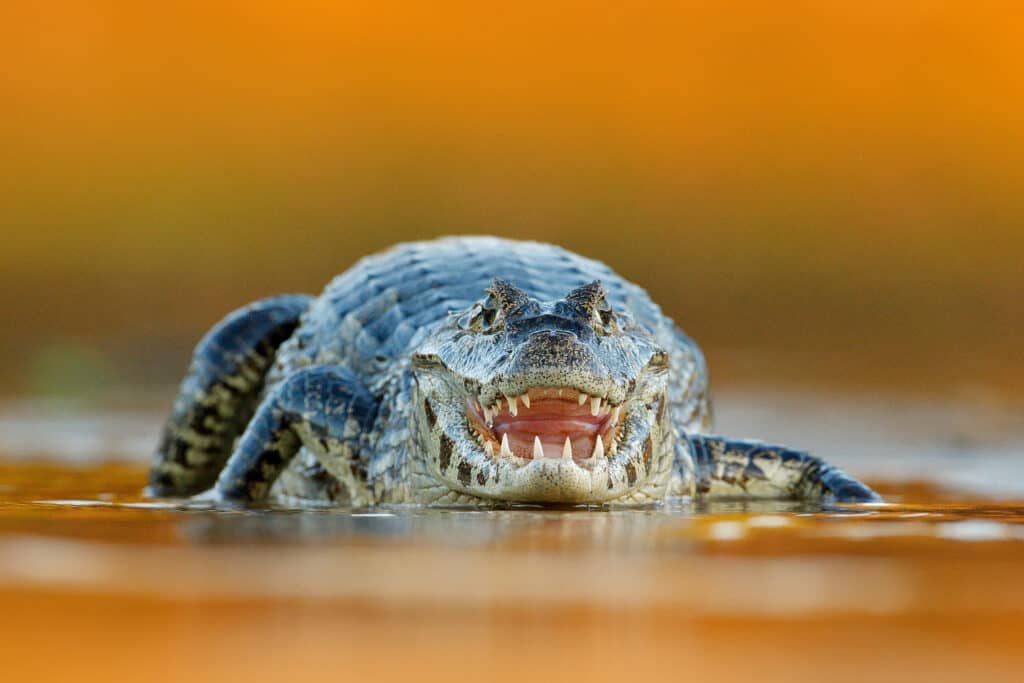
The yacare caiman is endemic to Brazil and is one of the more dangerous animals in the country.
©Ondrej Prosicky/Shutterstock.com
Brazil is home to some of the most dangerous animals in the world. The most well-known ones are jaguars, pumas, and caimans. Jaguars and pumas are both big cats that can easily overpower humans with their sharp claws and powerful jaws.
Caimans are large reptiles that live in tropical areas near rivers or swamps. They have razor-sharp teeth, which can inflict serious injuries if provoked. All three species inhabit different regions of Brazil, depending on their habitat preferences. For example, jaguars prefer dense rainforests, while caimans tend to stay close to freshwater sources such as lakes or streams. It’s important to be aware of these animals when traveling through certain parts of Brazil. Always keep your distance and never attempt to approach them!
Most people visit Brazil and have no trouble with its unique animals. Of course, you will want to avoid visiting Ilha da Queimada Grande because it has the world’s highest concentration of poisonous snakes, and people are forbidden to go there. Yet, there are a few dangerous animals that you will want to be careful of encountering. In most cases, it is not the weird or unique animals that are dangerous but those that live in residential areas.
- Dogs – Approximately 544,000 people are bitten annually by dogs in Brazil.
- Cats – Approximately 86,500 people are bitten annually by cats. Additionally, their scratches can cause deadly fungus diseases.
- Bats – Approximately 4,900 people are bitten annually by bats.
- Primates – Different primates bite about 4,000 people annually.
Rarest Animals in Brazil
The pampas cat is one of the rarest animals in Brazil. This wildcat lives in a wide range of habitats but is especially fond of grasslands and savannas found throughout the country. The pampas cat’s fur coloration varies from light yellow to grayish-brown depending on its geographic location, and they have short tails with black tips. Unfortunately, this species is listed as “Vulnerable” by the IUCN due to habitat loss from deforestation and agricultural practices, as well as being hunted for their fur or mistaken for pests like rabbits or rodents.
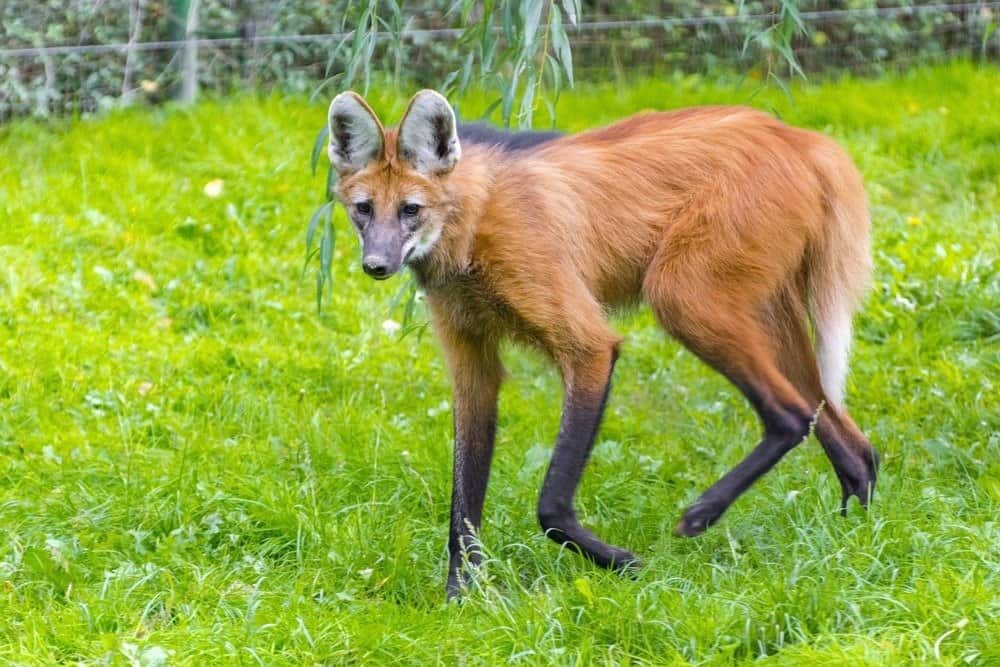
A maned wolf is a rare animal to spot in Brazil.
©belizar/Shutterstock.com
The Maned Wolf is another species native to Brazil that can be classified as rare. These slender grey wolves are often seen alone or in pairs rather than in packs, making them somewhat harder to spot compared to other wolf species. They inhabit open fields near forests and live off fruits, small mammals, birds, and reptiles. They are known to occasionally supplement their diets with garbage from nearby farms or villages when food sources become sparse during dry seasons. Habitat destruction has caused these wolves’ numbers to decline significantly over time resulting in them now being listed as Near Threatened by the IUCN Red List of Threatened Species.
The Giant Anteater is one of the rarest animals in Brazil and has a unique appearance. It can measure up to 8 feet long and weigh anywhere between 66-99 lbs, making it one of the largest species of anteaters in South America. Although they have an enormous appetite for ants, termites, and larvae – consuming up to 25,000 insects per day – these creatures aren’t actually carnivorous because they don’t eat meat. Instead, their diet consists mainly of insects that they catch with their long tongues, which can extend up to 16 inches long! Interestingly enough, Giant Anteaters also use their powerful claws as a weapon against any potential threats or predators that may come too close. They are mostly solitary creatures but have been known to occasionally form small family groups when searching for food together.
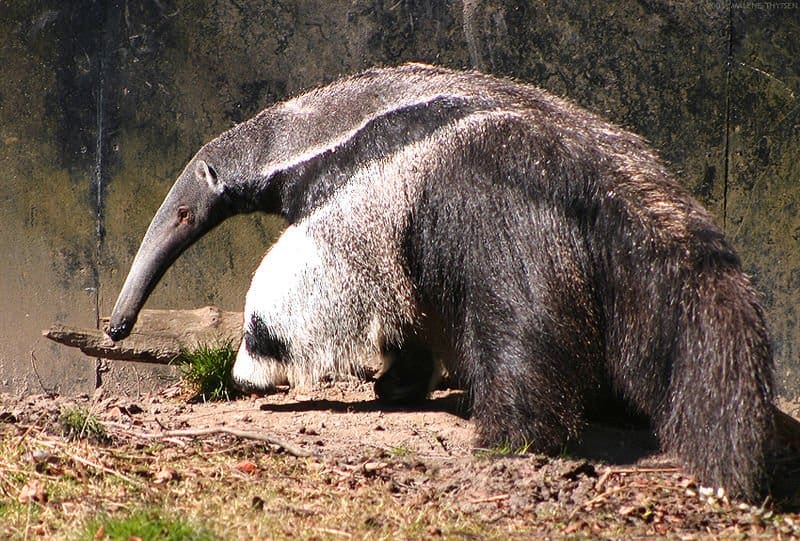
Giant anteater (Myrmecophaga tridactyla), is one of the rarest animals in Brazil.
©Malene Thyssen / Creative Commons – Original / License
Largest Animals in Brazil

Tapirs are one of the larger animals in Brazil, with males weighing up to 700 pounds.
The Amazon Rainforest is home to some of the largest animals in Brazil. One of these animals is the Giant Anteater which can reach up to 6 feet in length with a tail that adds another 2 feet. This species lives mainly on the ground or low-lying vegetation and feeds mostly on ants and termites, using its long snout and sticky tongue. In addition, they inhabit grasslands, savannas, swamps, and even coastal regions along riversides.
The Jaguar is another animal found in Brazil that can be considered one of its largest predators. It has an average body length of between four and six feet, with a weight ranging from 125 pounds for females to 210 pounds for males. It also has powerful legs allowing it to jump over 16 feet! It inhabits tropical forests but can also live in semi-desert areas as well as wet marshlands near rivers. The jaguar plays an important role in controlling prey populations by keeping their numbers down.
The Tapir is the largest terrestrial animal in Brazil and can be found in a variety of habitats, including dense rainforests, savannas, marshes, and even flooded forests. They usually weigh around 360 lbs, but males may reach up to 700 lbs. These shy creatures are solitary animals that feed on a wide variety of plants, such as fruit, leaves, and aquatic vegetation. To cool off during hot days, they indulge in mud baths which provide them with an extra layer of insulation from the heat. However, if provoked or threatened, they become aggressive by lashing out with their powerful jaws and sharp claws. Tapirs are also excellent swimmers, so when confronted by predators, they have been known to escape into rivers where they can more easily elude danger.
Endangered Animals In Brazil
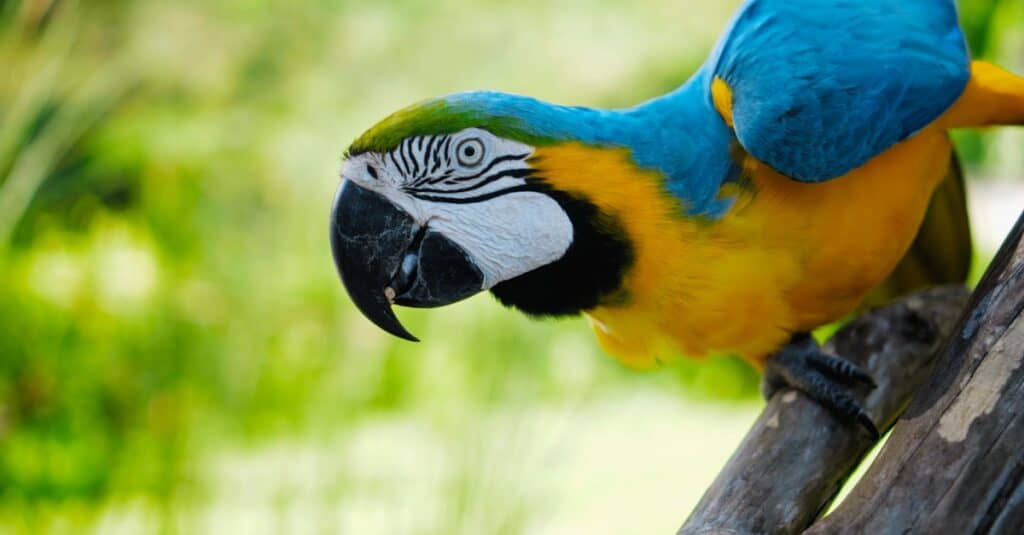
The blue-throated Macaw is one of many endangered species in Brazil.
©iStock.com/Nikolai Grigorev
The current state of endangered animals in Brazil is dire. Land seizures and the expansion of farming and ranching have caused their habitat to shrink significantly in both the Amazon rainforest and the Brazilian savanna. Add in higher-than-usual temperatures and fires, and the problem only gets worse.
In order for these species to survive, humans must do their part by reducing their consumption of animal products. By using less land to grow hay and animal feed, we could help these animals thrive once again. Doing so would not only help save endangered species but also reduce climate change – a win-win situation! If everybody takes steps towards reducing their ecological footprint, we can make a difference in protecting our planet’s biodiversity.
Brazil is home to many endangered animals. The vast majority of them are found in the Amazon Rainforest. Many of these amazing and weird animals live nowhere else on earth. They include:
- Glaucous macaw
- Brumback’s night monkey
- Nancy Ma’s night monkey
- Blue-throated macaw
- White-bellied spider monkey
- Variegated spider monkey
- White-cheeked spider monkey
- Carabaya stubfoot toad
- Quito stub-foot toad
- San Martin titi monkey
- Ka’apor capuchin
- Amazon giant glass frog
- White-nosed saki
The Flag of Brazil

The flag of Brazil consists of a vivid green field that features a yellow diamond with a blue globe in it.
©iStock.com/Leila Melhado
The flag of Brazil is one of the most recognizable flags in the world. It is dominated by a green field, with a yellow diamond in its center which contains a blue globe. Inside this blue globe are inscribed 27 stars and the country’s motto Ordem e Progresso (Order and Progress). This motto was taken from Auguste Comte’s positivism philosophy, which emphasizes scientific progress as well as social reform.
The design of the Brazilian flag has been used since 1889 when it replaced an earlier version that featured only 21 stars for each state at that time. The current design featuring 27 stars represents all 26 states and one federal district plus Rio de Janeiro city, which was part of Brazil at the time it was adopted.
As per tradition, on every November 15th – Flag Day – people across Brazil proudly fly their national flag to celebrate freedom and peace within their nation. As such, it serves to remind citizens about both past struggles for independence as well as present aspirations for betterment within society through progress and order.
Brazilian Animals
Agouti
The agouti is one of the only animals that can crack open Brazil nut pods!
Amazon Parrot
These parrots can be trained to be "talking birds" that mimic human speech
Anaconda
They are the heaviest snake in the world
Anhinga
Their name means snake bird
Ant
First evolved 100 million years ago!
Anteater
Has the longest tongue of any animal in relation to its body size!
Arapaima
One of the largest freshwater fish
Armadillo
Can curl into a hard, protective ball!
Armyworm
They are so named because they "march" in armies of worms from one crop to another in search of food
Asian Lady Beetle
Asian lady beetles infest indoor spaces, but they do not reproduce indoors.
Banjo Catfish
The banjo catfish is extremely shy and known for hiding from onlookers.
Barb
There are over 1768 known species!
Barn Owl
Found everywhere around the world!
Bat
Detects prey using echolocation!
Bear
There are 8 different species!
Bed Bugs
Bed bugs feed for 4-12 minutes.
Bee
Rock paintings of bees date back 15,000 years
Beetle
There are more than 350,000 different species
Bird
Not all birds are able to fly!
Biscuit Beetle
The biscuit beetle form a symbiotic relationship with yeast
Blind Snake
The blind snake is often mistaken for a worm.
Blue Tang
One of the most colorful members of the genus Acanthurus
Bobolink
In spring, the male bobolink is the only North American bird who is dark below and light colored above. This makes identification easy.
Bush Dog
Bush dogs have webbed toes to help them swim.
Butterfly
There are thought to be up 17,500 species!
Caecilian
Some species' babies use their hooked or scraper-like teeth to peel off and eat their mother's skin
Caiman
Can grow to up 6 meters long!
Camel Cricket
The camel crickets that are found in the USA are light brown in color. They also have dark streaks all over their body.
Capybara
Excellent at both diving and swimming
Carpenter Ant
Carpenter ants can lift up to seven times their own weight with their teeth!
Cat
May have been domesticated up to 10,000 years ago.
Catfish
There are nearly 3,000 different species!
Centipede
There are about 3,000 documented species!
Chicken
First domesticated more than 10,000 years ago!
Cichlid
There are more than 2 000 known species!
Coati
Found in dense forests and wet jungles!
Cockroach
Dated to be around 300 million years old!
Codling Moth
Pupae are able to undergo diapause to survive poor fruit yield years and winter.
Coral Snake
There are over 80 species of coral snake worldwide.
Cormorant
They can fly 35 mph and dive 150 feet below water.
Cory Catfish
All Cory Catfish have three pairs of barbels around their mouth that they use to detect food.
Cow
There are nearly 1.5 billion worldwide!
Crab
There are 93 different crab groups
Crab-Eating Fox
The crab-eating fox is extremely adaptable, living in all sorts of habitats and eating almost any available food.
Crab Spider
Crab Spiders can mimic ants or bird droppings
Cricket
Male crickets can produce sounds by rubbing their wings together
Crocodile
Have changed little in 200 million years!
Crocodylomorph
Crocodylomorphs include extinct ancient species as well as 26 living species today.
Crow
A group of these birds is called a Murder.
Discus
One of the only schooling Cichlids!
Dog
First domesticated in South-East Asia!
Dog Tick
Dog ticks feed on dogs and other mammals
Donkey
First domesticated 5,000 years ago!
Duck
Rows of tiny plates line their teeth!
Dung Beetle
The dung beetle can push objects many times its own weight
Dusky Shark
The Dusky Shark sometimes eats trash discarded by humans.
Eagle
Has exceptional eyesight!
Earthworm
They are hermaphrodites, which means they have male and female organs
Earwig
There are nearly 2,000 different species!
Eel
Eels can be a mere few inches long to 13 feet!
Electric Eel
Despite its powerful shock, electric eels have terrible vision.
Ember Tetra
Ember tetras are one of the smallest shoaling fish in the world
Executioner Wasp
The Executioner Wasp's sting is one of the most painful in the world.
Falcon
The fastest creatures on the planet!
Fallow deer
The fallow deer has more variation in its coat colors than most other deer.
False coral snake
The false coral snake mimics both the coral snake and the cobra to scare away predators
False Widow Spider
False spiders actually prey on black widow spiders and other hazardous spiders
Fiddler Crab
The fiddler crab gets its name from the motion the males make with their over-sized claw during the mating ritual.
Fila Brasileiro
The breed has a unique, cat-like gait, while females have a finer gait than males.
Firefly
The firefly produces some of the most efficient light in the world
Flea
Adult fleas can jump up to 7 inches in the air
Fly
There are more than 240,000 different species!
Frog
There are around 7,000 different species!
Fruit Fly
Fruit flies are among the most common research animals in the world
Galapagos Shark
Galapagos sharks are cannibalistic and sometimes eat their young, so the pups stay away from the adults in shallow water.
Gecko
There are thought to be over 2,000 species!
Giant Armadillo
Armadillos have a smell that’s described as strong, sweet and acrid.
Glowworm
Found inhabiting dense woodland and caves!
Gnat
Males form large mating swarms at dusk
Great Potoo Bird
At night, they make a terrifying low call that sounds like a distressed moan or growl.
Grouper
Many grouper can change their sex, and it is always from female to male.
Guppy
Also known as the Millionfish!
Gypsy Moth
One of the most invasive species in the world
Hamster
Able to run as quickly backwards as forwards!
Hare
Can reach speeds of over 50 mph!
Harpy Eagle
Talon's the size of a grizzly bear's claws!
Hawk Moth Caterpillar
Many hawk moth caterpillars eat toxins from plants, but don’t sequester them the way milkweed butterflies do. Most toxins are excreted.
Hercules Beetle
This dynastine scarab beetle makes a weird huffing sound when it’s disturbed.
Heron
Inhabits wetlands around the world!
Honey Bee
There are only 8 recognized species!
Horse
Has evolved over 50 million years!
Horsefly
Horseflies have been seen performing Immelmann turns, much like fighter jets.
House wren
The wren’s epithet, aedon, comes from a Greek queen who accidentally killed her only son. She was actually aiming for her nephew, and Zeus took pity on her and turned her into a nightingale.
Human
Thought to have orignated 200,000 years ago!
Hummingbird
Beat their wings up to 80 times per second!
Huntsman Spider
Some huntsman spiders have an interesting way of moving around. Some cartwheel while others do handsprings or backflips.
Hyacinth Macaw
The Hyacinth Macaw is the largest flying parrot in the world!
Ibis
Found in swamps, marshes and wetlands!
Iguana
Uses visual signals to communicate!
Insects
There are an estimated 30 million species!
Jabiru
They form lifelong pair bonds and live in groups near water sources.
Jacana
The jacana has the ability to swim underwater
Jaguar
The largest feline on the American continent!
Keyhole Cichlid
When these fish feel stressed, their skin color will change from yellow-cream to brown.
King Vulture
The king vulture is the second largest New World vulture species
Kingfisher
Inhabits wetlands and woodlands worldwide!
Kinkajou
The kinkajou is a nimble forest-dwelling mammal of Central and South America.
Ladybug
There are more than 5,000 species worldwide!
Leech
Has 10 pairs of eyes!
Lipstick Albino Boa
Lipstick albino boas are a designer morph that you'll only find from breeders.
Lizard
There are around 5,000 different species!
Lizardfish
The lizardfish can camouflage itself against the sandy bottom to avoid predators.
Locust
Each locust can eat its weight in plants each day.
Macaw
The largest species of parrot in the world!
Maggot
Will only live in wet areas
Mallard
With an appropriate tail wind, the mallard can travel hundreds of miles a day
Maned Wolf
Despite its name, the Maned Wolf is not actually a wolf.
Margay
Margays are one of the world’s most highly adapted cat species for climbing trees!
Mealybug
They have a symbiotic relationship with ants.
Megatherium
Megatherium probably used its lips more than its tongue when feeling for choice leaves in the treetops.
Millipede
Some species have a poisonous bite!
Mockingbird
Mockingbirds are incredible mimics that can learn hundreds of songs!
Mole
Primarily hunts and feeds on Earthworms!
Mole Cricket
Adult Mole crickets may fly as far as 5 miles during mating season and are active most of the year.
Molly
Known for their calm and peaceful nature!
Mongrel
Has characteristics of two or more breeds!
Monkey
There are around 260 known species!
Moorhen
Feeds on aquatic insects and water-spiders!
Mosquito
Only the female mosquito actually sucks blood
Moth
There are 250,000 different species!
Mouse
Found on every continent on Earth!
Mule
The offspring of a horse and donkey parents!
Muscovy Duck
Unlike most duck species, the Muscovy is silent and only makes noise when excited or threatened.
Nematode
Nematodes range in size from 1/10 of an inch to 28 feet long
Neon Tetra
Neon Tetras are very social and peaceful fish.
Nutria
An invasive species, one female nutria can birth up to 200 babies in just a few years of living!
Ocelot
Also known as the Painted Leopard!
Oranda Goldfish
Oranda goldfish are one of the most popular fancy goldfish breeds
Orb Weaver
Females are about four times the size of males
Oscar Fish
The Oscar fish has teeth in its throat!
Osprey
They reuse nesting sites for 70 years!
Otter
There are 13 different species worldwide
Owl
The owl can rotate its head some 270 degrees
Owl Butterfly
Owl butterflies derive their name from big spots on each hindwing that resemble owl eyes
Panther
Prefers to hunt at night than during the day!
Parakeet
Monk parakeets are the only parakeets that actually build nests. They’re also the only parakeets to nest in great colonies.
Parrot
Can live for up to 100 years!
Parrotlet
Parrotlets aren't the world's tiniest parrot — that would be the pygmy parrot of Australasia.
Peacock Bass
Peacock bass is known for their aggressive behavior and predatory instincts, making them a challenging target for sport fishermen.
Pheasant
Females lay between 8 and 12 eggs per clutch!
Pictus Catfish
Pictus catfish are social fish that should be kept in groups of 4 or more
Pigeon
They can find their way back to their nests from up to 1300 miles away.
Piranha
Generally found in fast-flowing streams!
Pit Viper
Pit vipers's fangs fold up into their mouths when they don't need them.
Porcupine
There are 30 different species worldwide!
Pterodactyl
Pterodactyl is not technically a dinosaur. Although they lived during the same time as dinosaurs, they are classified as winged reptiles.
Puma
Has longer back legs than front legs!
Quail
Inhabits woodland and forest areas worldwide!
Quetzal
The tail feathers of the male can be 1m long!
Raccoon
Known to wash their food before eating it!
Rainbow Boa
The rainbow boa is named for its iridescent skin that refracts light and creates a rainbow-colored effect.
Rat
Omnivores that eat anything!
Rat Snakes
Rat snakes are constrictors from the Colubridae family of snakes.
Rattlesnake
Rattlesnakes may have evolved their rattle to warn bison away from them.
Red Tail Boa (common boa)
Red tailed boas don’t suffocate their prey, they squeeze until the heart stops circulating blood to the brain.
Rhea
Male rheas mate with up to a dozen females and single-handedly raise up to 80 chicks at once!
Rodents
The capybara, the world’s largest rodent, likes to be in and around bodies of water. Because of this, the Catholic Church in South America decided that it was a fish, and people were allowed to eat it during Lent and First Fridays.
Rooster
Will mate with the entire flock!
Sable Ferret
Ferrets were used during the Revolutionary War to keep down the rat population.
Salamander
There are more than 700 different species!
Sand Crab
The sand crab burrows beneath the sand with its tail
Scarlet Macaw
Like many parrots, the scarlet macaw is capable of vocal mimicry.
Scorpion
There are around 2,000 known species!
Seahorse
Males give birth to up to 1,000 offspring!
Senepol Cattle
Senepol cattle have a distinctive red color and no horns.
Sharp-Shinned Hawk
In captivity, sharp-shinned hawks can live up to 13 years. However, in the wild, this number is significantly reduced to 3 years!
Sheep
Around 35 million in the English countryside!
Short-Eared Owl
The short-eared owl is one of the most widespread owl species in the world, covering five continents.
Shrew
The spinal column of the shrew Scutisorex somereni is so strong and reinforced that it can support the weight of an adult human.
Shrimp
There are 2,000 different species worldwide!
Skink Lizard
Some skinks lay eggs in some habitats while giving birth to skinklets in other habitats.
Skunk
Also known as the Polecat!
Sloth
It's body temperature is between 30 - 34 degrees!
Slug
They glide around on one foot, which is aided by the slime they produce
Snail
There are nearly 1,000 different species!
Snake
There are around 4,000 known species worldwide
Sparrow
There are 140 different species!
Spider Monkey
Belongs to the only family of primates in the world with full prehensile tails!
Spider Wasp
They prey on spiders to feed their larvae or they parasitize other spider wasps.
Spinosaurus
The Spinosaurus is the biggest carnivorous dinosaur ever discovered!
Squirrel
Small rodents found in woodlands worldwide!
Stork
They can’t sing like other birds.
Stromatolite
Stromatolites played a key role in the development of life on Earth.
Stupendemys
The largest freshwater turtle known to have ever lived!
Summer Tanager
They remove bee stingers by rubbing them against a tree
Swan
Populations have been affected by pollution!
Tapir
Most closely related to horses and rhinos!
Tarantula Hawk
Tarantula hawks are excellent pollinators, especially for milkweed.
Termite
Their mounds can be up to 9 meters tall!
Tetra
Native to the freshwater streams of South America!
Theropod
Some theropods had feathers and may have been ancestors of modern birds.
Thrush
The American robin is called the robin because its red breast reminded European settlers of the robin back in the old country.
Tick
They inject hosts with a chemical that stops them from feeling the pain of the bite
Tiger Beetle
The adult tiger beetle is one of the fastest land insects in the world
Tortoise
Can live until they are more than 150 years old!
Toucan
There are more than 40 different species!
Tree Frog
Found in warmer jungles and forests!
Turtles
Some species of aquatic turtles can get up to 70 percent of their oxygen through their butt.
Uakari
Have a very short tail for their size!
Uaru Cichlid
The color of the Uaru cichlid changes during the spawning season
Upland Sandpiper
They make jerky movements as they walk through the grass, searching for food.
Urutu Snake
The female Urutu snake grows longer and heavier than males of the same species
Vampire Bat
Have a heat sensor on the end of their nose!
Veery
The veery is named for its sharp "veer" call.
Vinegaroon
Vinegaroons can spray 19 times before the glands are depleted
Vulture
There are 30 different species worldwide!
Wasp
There are around 75,000 recognised species!
Wattled Jacana
They are typically noisy birds but take on a soft tone with their young.
Whitetail Deer
Although deer are herbivores, they will sometimes eat mice and birds when they can catch them.
Wood Turtle
Temperature determines the sex of turtle eggs
Woodlouse
This animal can roll up into a ball
Xingu River Ray
The Xingu River ray is only found in the Xingu River in Brazil.
Yarara
Females are much larger than males
Zebra Pleco
The zebra pleco is a bottom feeder with a sucker mouth.
Brazilian Animals List
- Abyssinian Guinea Pig
- Agouti
- Amazon Parrot
- Amazon Tree Boa
- Amazonian Royal Flycatcher
- Anaconda
- Anhinga
- Ant
- Anteater
- Arapaima
- Armadillo
- Armyworm
- Asian Lady Beetle
- Banjo Catfish
- Barb
- Barn Owl
- Barn Swallow
- Bat
- Bear
- Bed Bugs
- Bee
- Beetle
- Beewolf wasp
- Bird
- Biscuit Beetle
- Black-Bellied Whistling Duck
- Black Tarantula
- Black Widow Spider
- Blind Snake
- Blue Dragon Sea Slug
- Blue Tanager (Blue-Grey Tanager)
- Blue Tang
- Bobolink
- Brazilian Black Tarantula
- Brazilian Terrier
- Brazilian Treehopper
- Brown Dog Tick
- Burrowing Owl
- Bush Dog
- Bushmaster Snake
- Butterfly
- Caecilian
- Caiman
- Caiman Lizard
- Camel Cricket
- Capybara
- Carpenter Ant
- Cat
- Caterpillar
- Catfish
- Centipede
- Chicken
- Chilean Recluse Spider
- Cichlid
- Coati
- Cockroach
- Codling Moth
- Collared Peccary
- Common Furniture Beetle
- Common House Spider
- Coral Snake
- Cormorant
- Cory Catfish
- Cow
- Crab
- Crab-Eating Fox
- Crab Spider
- Cricket
- Crocodile
- Crocodylomorph
- Crow
- Cuckoo
- Discus
- Dog
- Dog Tick
- Donkey
- Dragonfly
- Dubia Cockroach
- Duck
- Dung Beetle
- Dusky Shark
- Eagle
- Earthworm
- Earwig
- Eastern Meadowlark
- Eel
- Electric Eel
- Ember Tetra
- Emerald Tree Boa
- Emperor Tamarin
- Executioner Wasp
- Falcon
- Fallow deer
- False coral snake
- False Water Cobra
- False Widow Spider
- Fer-de-lance Snake
- Fiddler Crab
- Fila Brasileiro
- Firefly
- Flea
- Fly
- Flying Squirrel
- Frog
- Fruit Fly
- Fulvous Whistling Duck
- Galapagos Shark
- Gecko
- German Cockroach
- Giant Armadillo
- Glowworm
- Gnat
- Golden Lancehead
- Golden Lion Tamarin
- Goliath Grouper
- Grasshopper
- Great Potoo Bird
- Green Anaconda
- Grouper
- Gulper Catfish
- Guppy
- Gypsy Moth
- Hamster
- Hare
- Harpy Eagle
- Harris’s Hawk
- Hawk Moth Caterpillar
- Hepatic Tanager (Red Tanager)
- Hercules Beetle
- Heron
- Hognose snake
- Honey Bee
- Argentine Horned Frog
- Horse
- Horsefly
- House wren
- Housefly
- Howler Monkey
- Human
- Hummingbird
- Huntsman Spider
- Hyacinth Macaw
- Ibis
- Iguana
- IMG Boa Constrictor
- Insects
- Jabiru
- Jacana
- Jack Crevalle
- Jaguar
- Jumping Spider
- Keyhole Cichlid
- Kinder Goat
- King Vulture
- Kingfisher
- Kinkajou
- Kitefin Shark
- Ladybug
- Leech
- Lipstick Albino Boa
- Lizard
- Lizardfish
- Locust
- Lone Star Tick
- Macaw
- Maggot
- Mallard
- Maned Wolf
- Margay
- Marine Toad
- Marmoset
- Mealybug
- Megatherium
- Mexican Eagle (Northern crested caracara)
- Mexican Free-Tailed Bat
- Millipede
- Mockingbird
- Mole
- Mole Cricket
- Molly
- Mongrel
- Monkey
- Moorhen
- Morpho Butterfly
- Mosquito
- Moth
- Mountain Lion
- Mouse
- Mule
- Muscovy Duck
- Needlefish
- Nematode
- Neon Tetra
- No See Ums
- Nutria
- Ocelot
- Oranda Goldfish
- Orange Tanager (Orange-Headed Tanager)
- Orb Weaver
- Oscar Fish
- Osprey
- Otter
- Owl
- Owl Butterfly
- Ox
- Panther
- Parakeet
- Parrot
- Parrotlet
- Peacock Bass
- Peregrine Falcon
- Pheasant
- Phytosaurs
- Pictus Catfish
- Pied Tamarin
- Pigeon
- Amazon River Dolphin (Pink Dolphin)
- Piranha
- Pit Viper
- Platinum Arowana
- Poison Dart Frog
- Polka Dot Stingray
- Pompano Fish
- Porcupine
- Praying Mantis
- Pterodactyl
- Puma
- Pygmy Marmoset (Finger Monkey)
- Quail
- Quetzal
- Raccoon
- Rainbow Boa
- Rat
- Rat Snakes
- Rattlesnake
- Red-Footed Tortoise
- Red-handed Tamarin
- Red Tail Boa (common boa)
- Redtail Catfish
- Rhea
- River Turtle
- Rodents
- Rooster
- Roseate Spoonbill
- Saber-Toothed Tiger
- Sable Ferret
- Salamander
- Sand Crab
- Scarlet Macaw
- Scorpion
- Seahorse
- Senepol Cattle
- Sharp-Shinned Hawk
- Sheep
- Short-Eared Owl
- Shrew
- Shrimp
- Silver Dollar
- Skeleton Tarantula
- Skink Lizard
- Skunk
- Sloth
- Slug
- Smokybrown Cockroach
- Snail
- Snake
- Southern House Spider
- Sparrow
- Spider Monkey
- Spider Wasp
- Spinosaurus
- Squirrel
- Squirrel Monkey
- Stick Insect
- Stork
- Stromatolite
- Stupendemys
- Summer Tanager
- Swainson’s Hawk
- Swallowtail Butterfly
- Swan
- Tapir
- Tarantula Hawk
- Termite
- Tetra
- Theropod
- Thrush
- Tick
- Tiger Beetle
- Titan Beetle
- Tortoise
- Toucan
- Toxodon
- Tree Cricket
- Tree Frog
- Tufted Coquette
- Turtles
- Uakari
- Uaru Cichlid
- Umbrellabird
- Unau (Linnaeus’s Two-Toed Sloth)
- Upland Sandpiper
- Urutu Snake
- Vampire Bat
- Veery
- Vermilion Flycatcher
- Vinegaroon
- Vulture
- Wasp
- Wattled Jacana
- Whiptail Lizard
- White Ferret / Albino Ferrets
- Whitetail Deer
- Wolf Spider
- Wood Turtle
- Woodlouse
- Woodpecker
- Woolly Monkey
- Worm
- X-Ray Tetra
- Xingu River Ray
- Yarara
- Yellow Crazy Ant
- Zebra Pleco
Share this post on:
About the Author
Heather Hall
Heather Hall is a writer at A-Z Animals, where her primary focus is on plants and animals. Heather has been writing and editing since 2012 and holds a Bachelor of Science in Horticulture. As a resident of the Pacific Northwest, Heather enjoys hiking, gardening, and trail running through the mountains with her dogs.
FAQs (Frequently Asked Questions)
What Kind of Animals Live in Brazil?
Many different kinds of animals live in Brazil because of the diverse ecosystems found there. The country is home to the world’s largest rodent, the capybara. It is also home to the world’s second-largest flightless bird, the rhear and the pink dolphin, one of the world’s largest river dolphins.
What Exotic Animals Live in Brazil?
Many exotic animals live in Brazil. Many people travel here to see Brazil’s Big Five, the Brazilian tapir, giant anteater, maned wolf, giant river otter, and jaguar.
What is the Biggest Animal in Brazil?
One of the biggest animals in Brazil is the spectacled bear. This bear can weigh up to 355 pounds and stand up to almost 6-feet tall. This species lives mainly in the cloud forests in southeastern Brazil. It dines on fruit and is a solitary animal. Researchers estimate that there are only about 18,000 spectacled bears left in the wild.
What Animals Live in the Brazilian Amazon?
The Brazilian Amazon is home to many animals. Many of these animals are just now being discovered, and scientists have a lot more work to do. Since 1999, they have found more than 2,000 new plants and animals.
What Animals Live in the Brazilian Rainforest?
Many different types of animals live in the rainforest, and scientists are discovering more all the time. One of the most amazing is the Caqueta titi monkey, whose young purr like cats when they are content. Another is the Tometes camunani, a fish that can be up to 20-inches wide and weigh 9 pounds.
